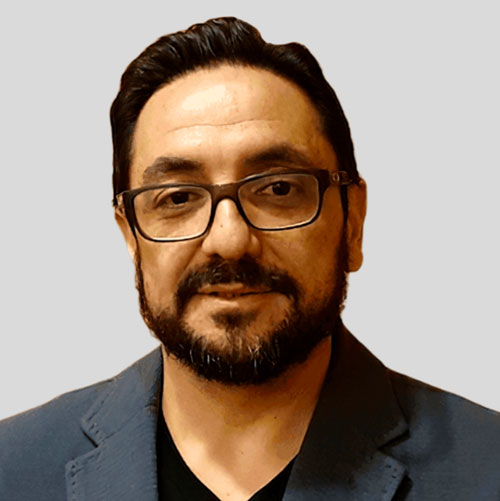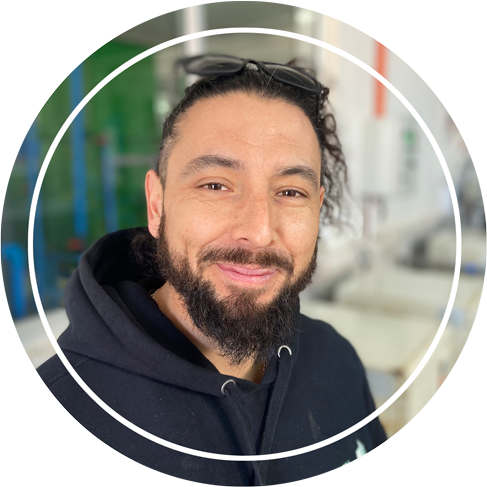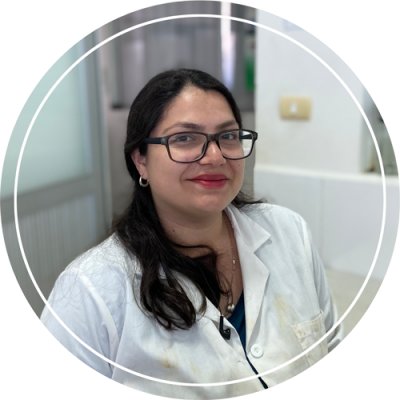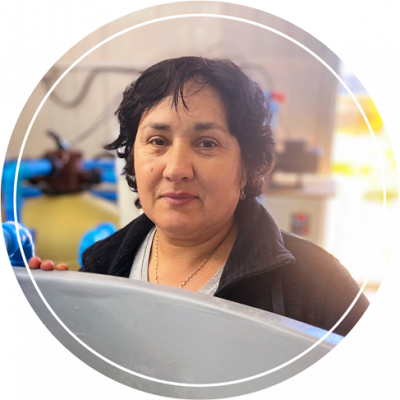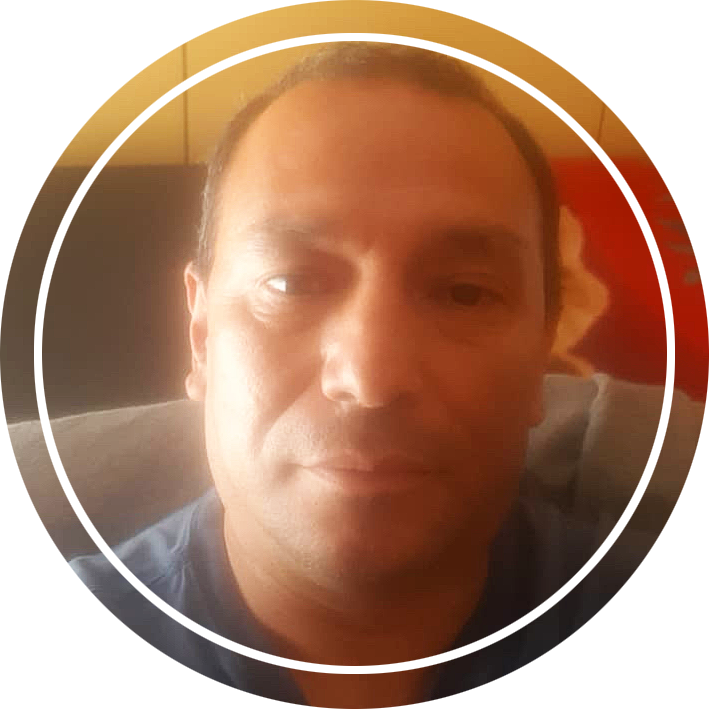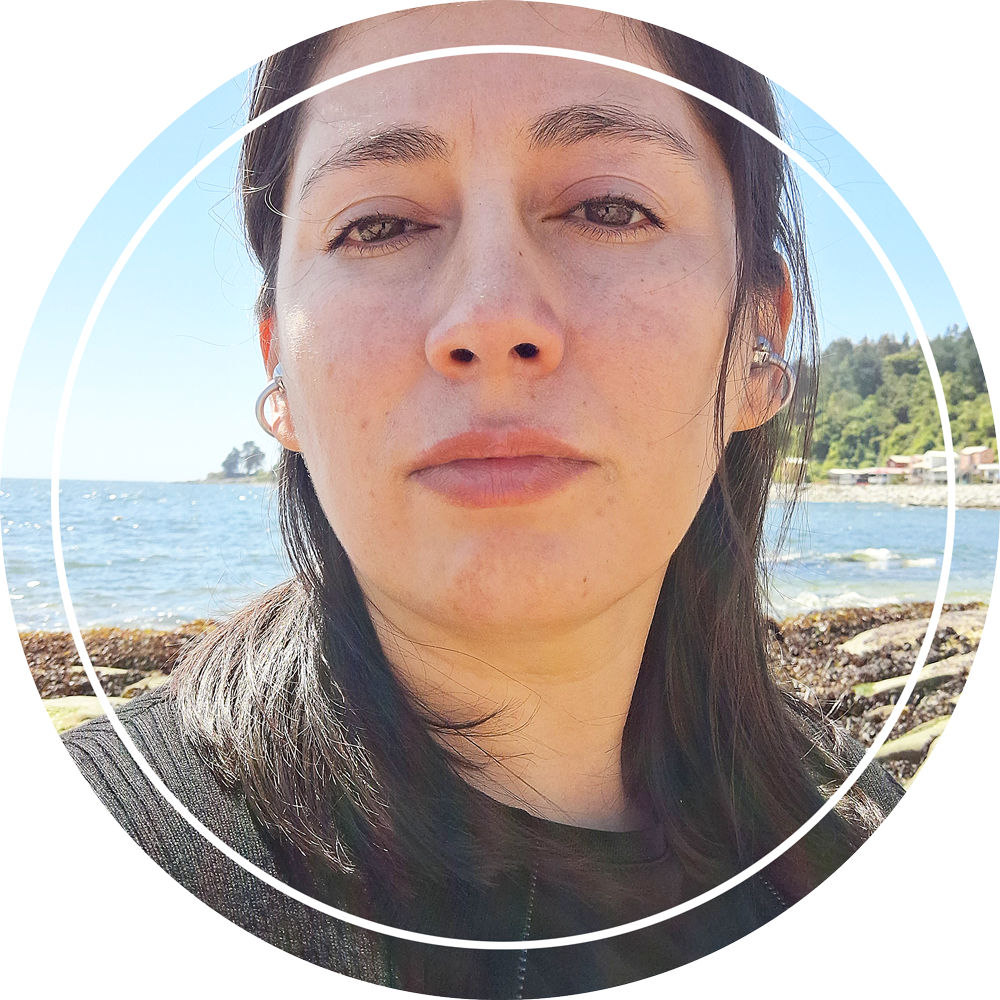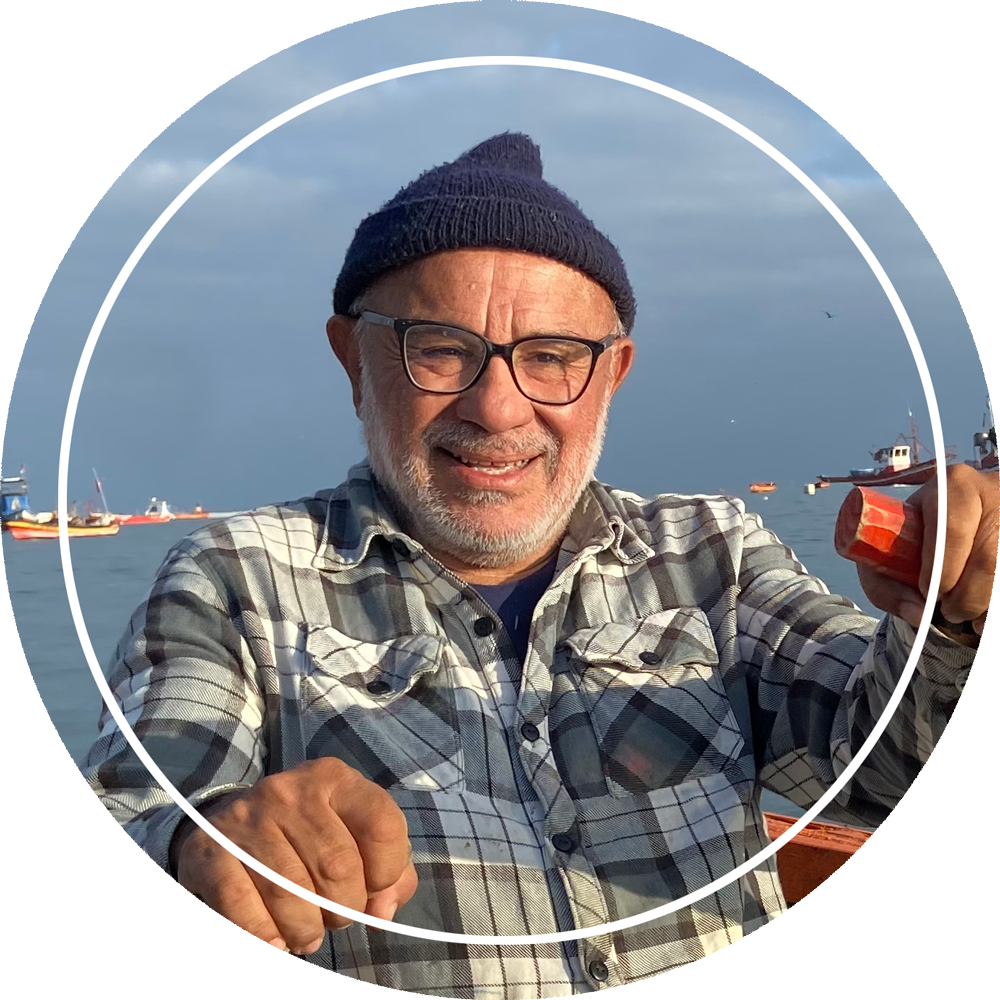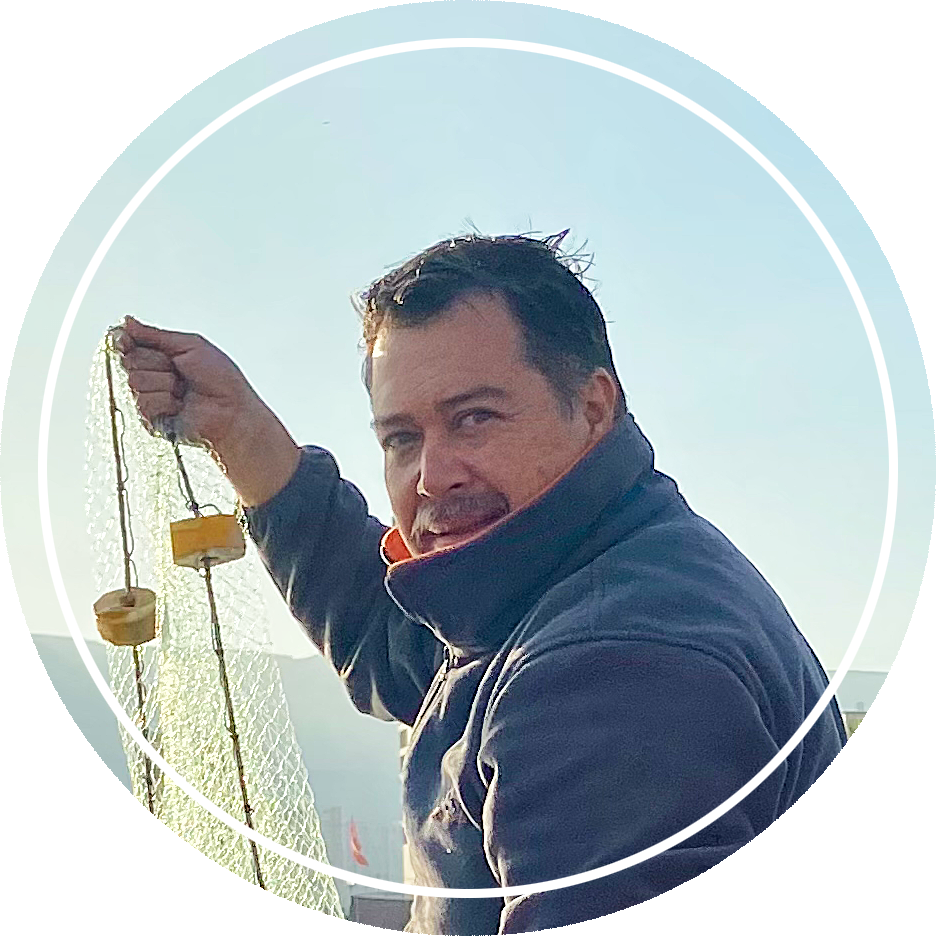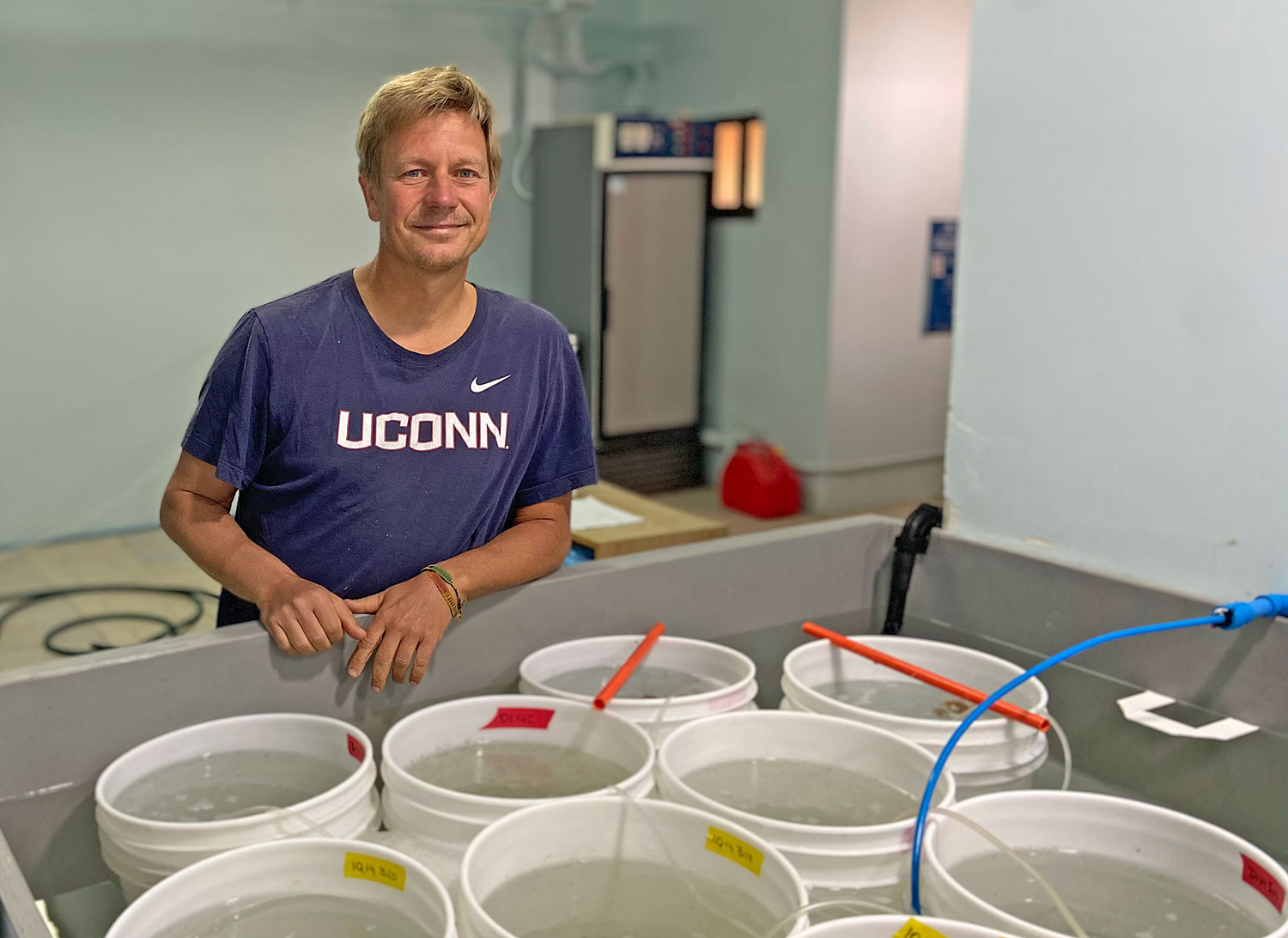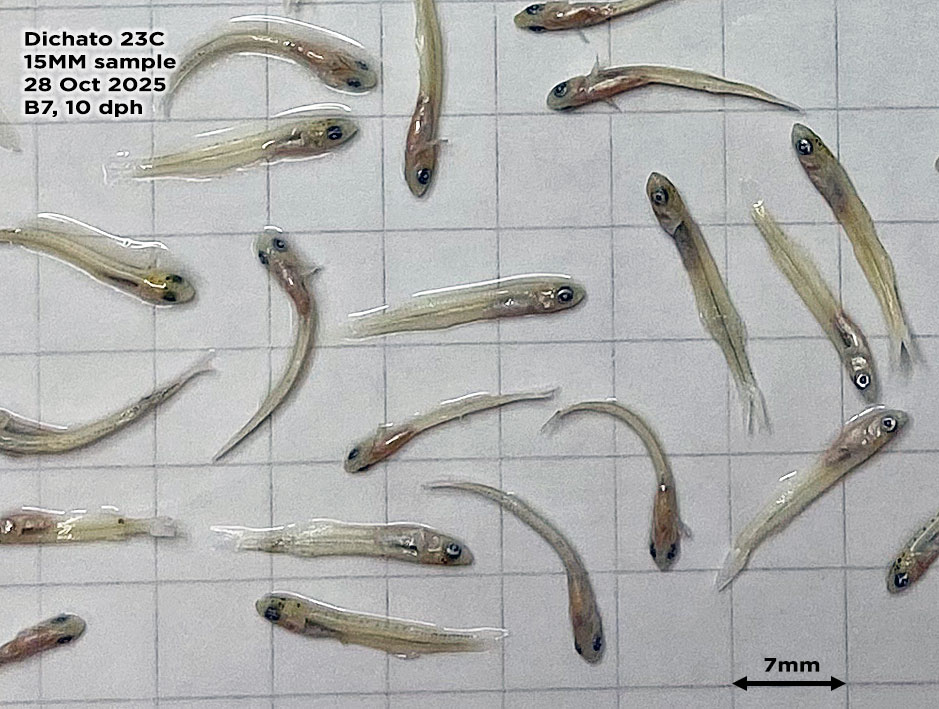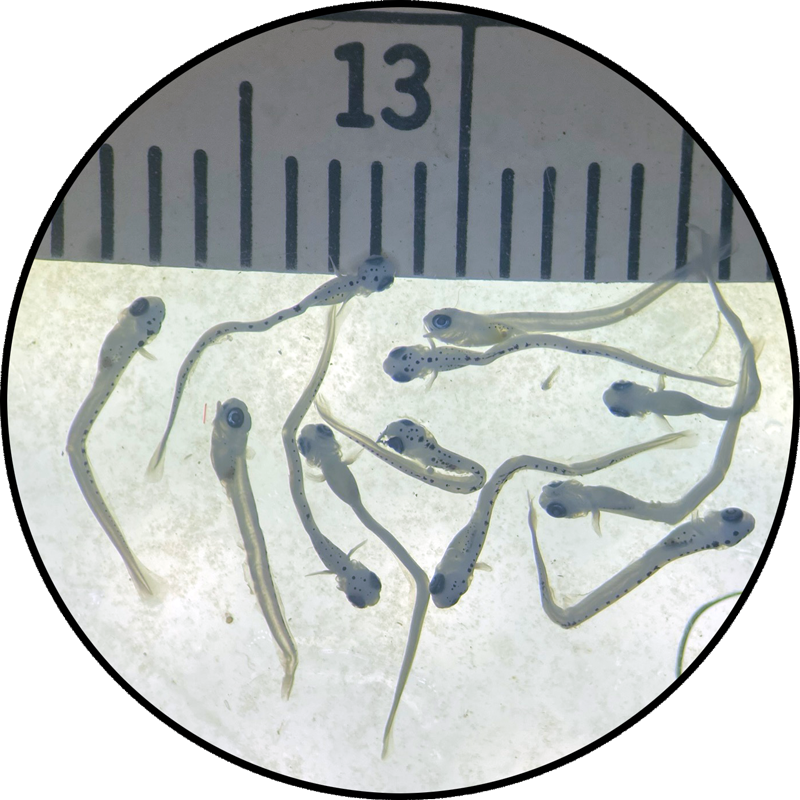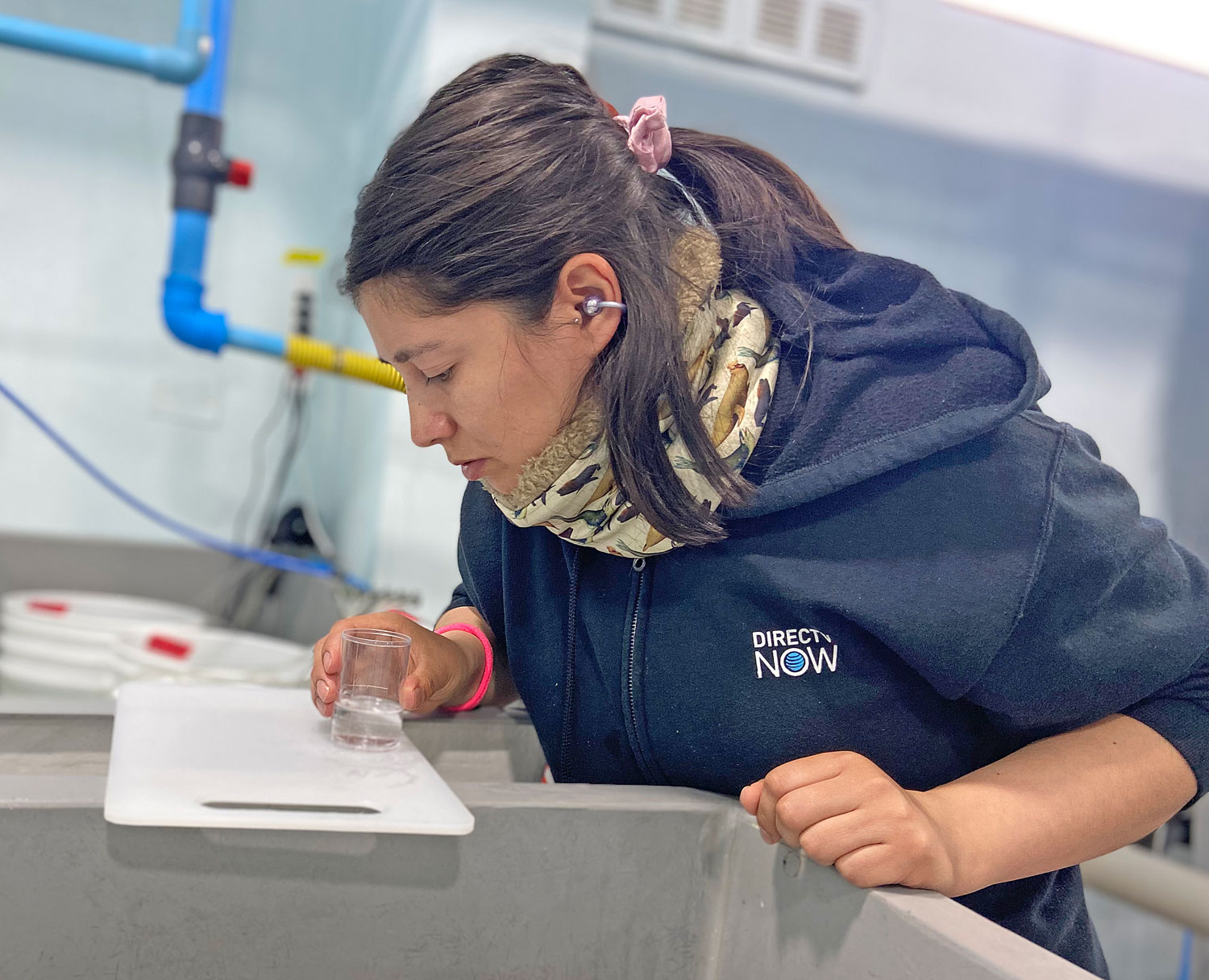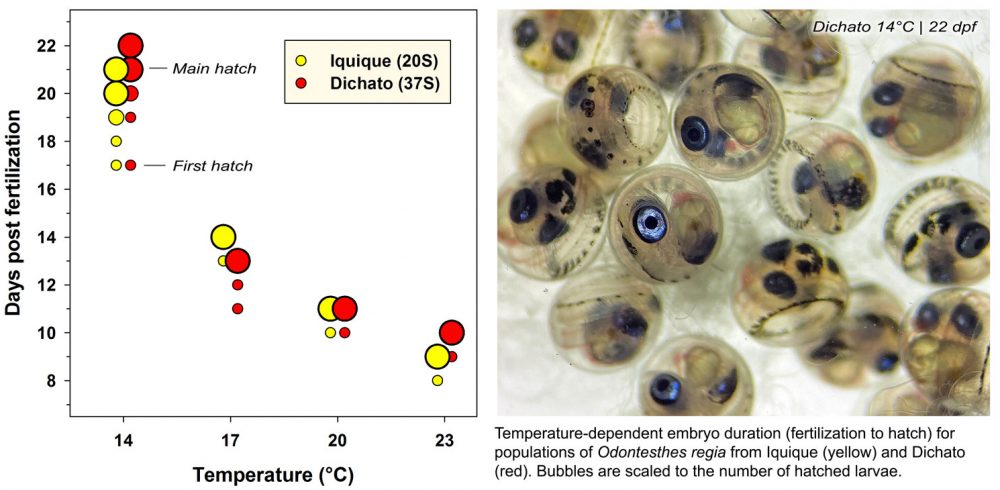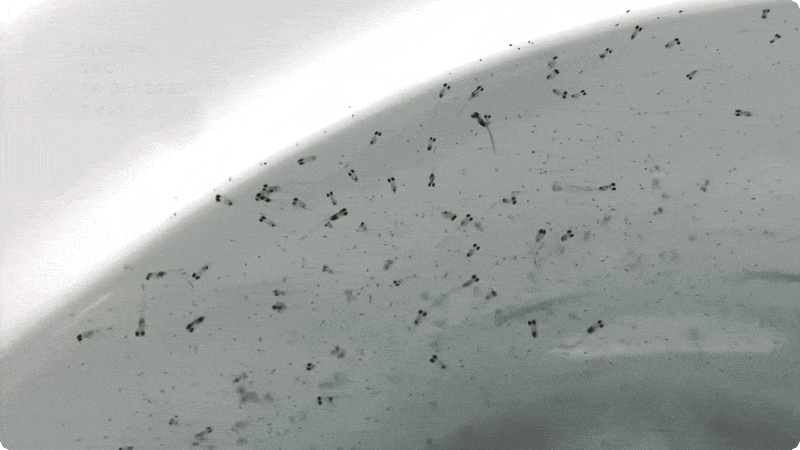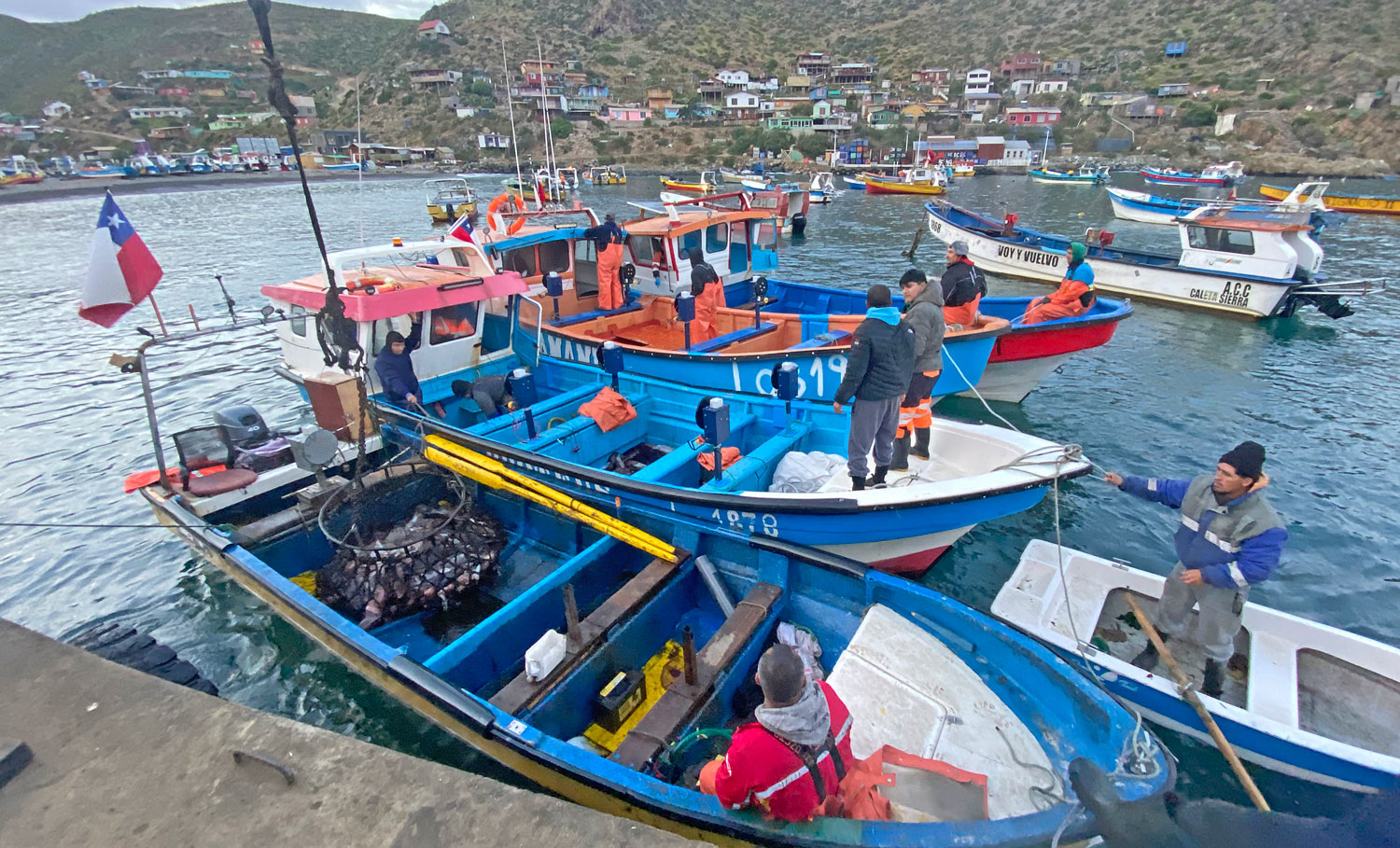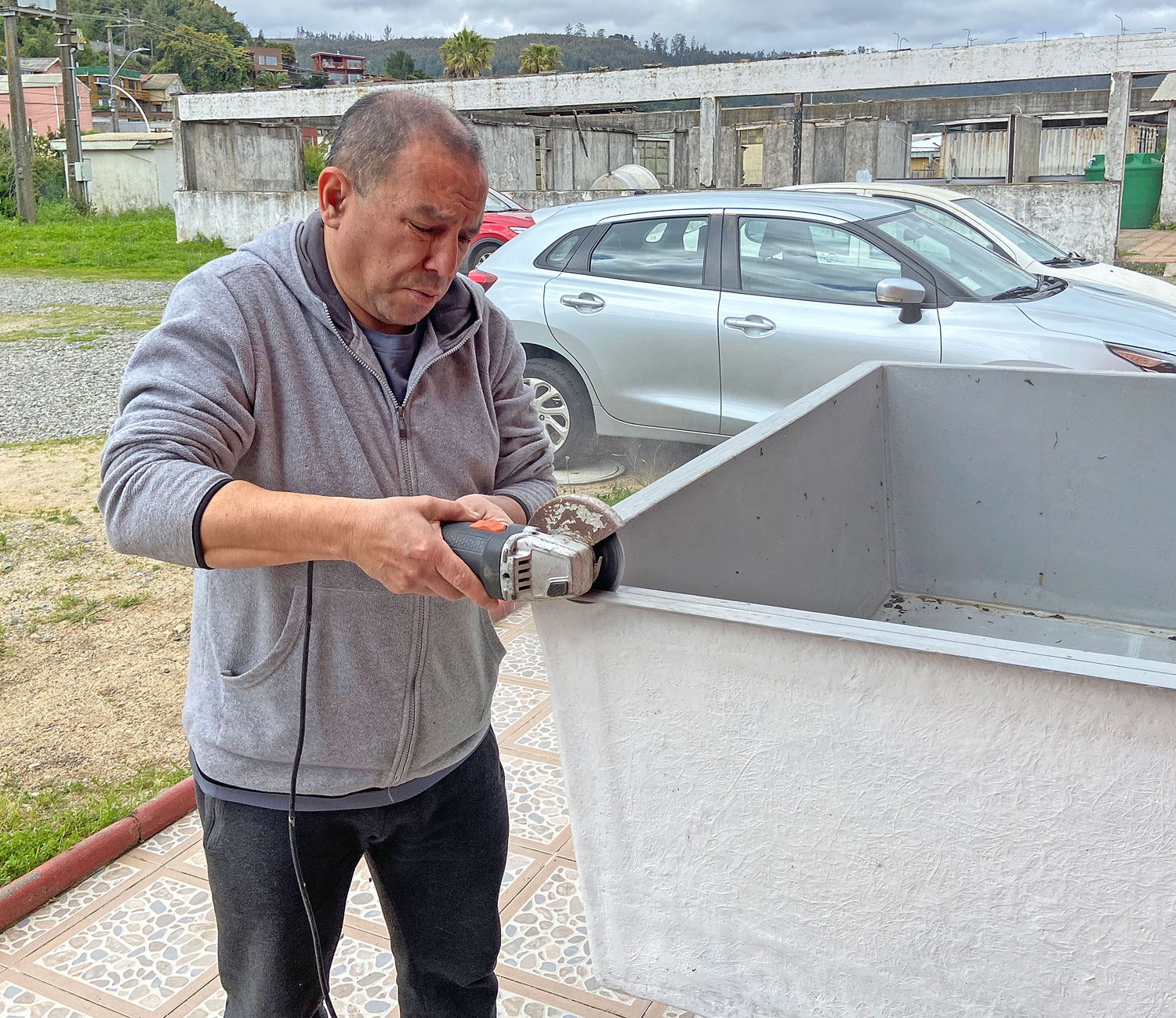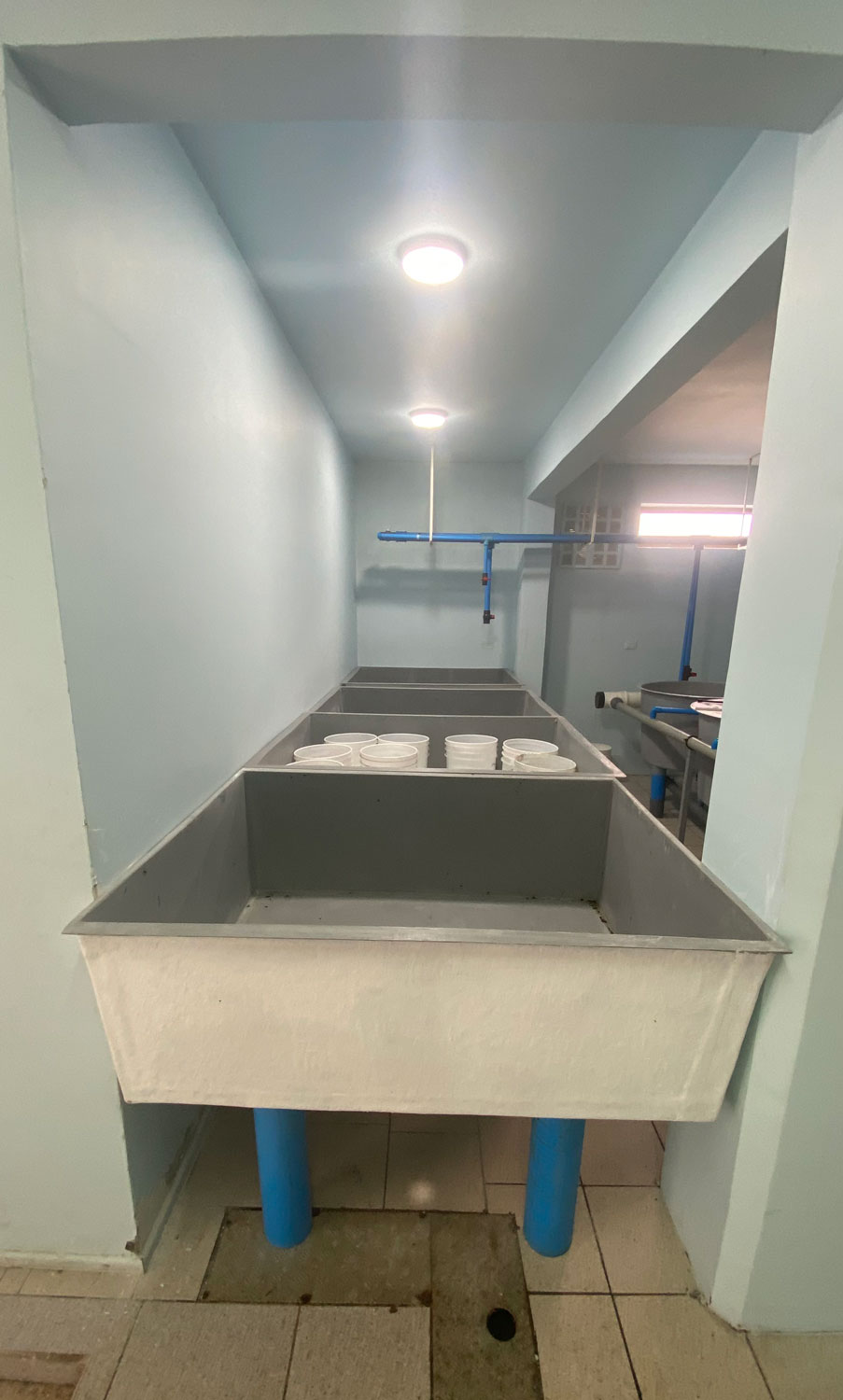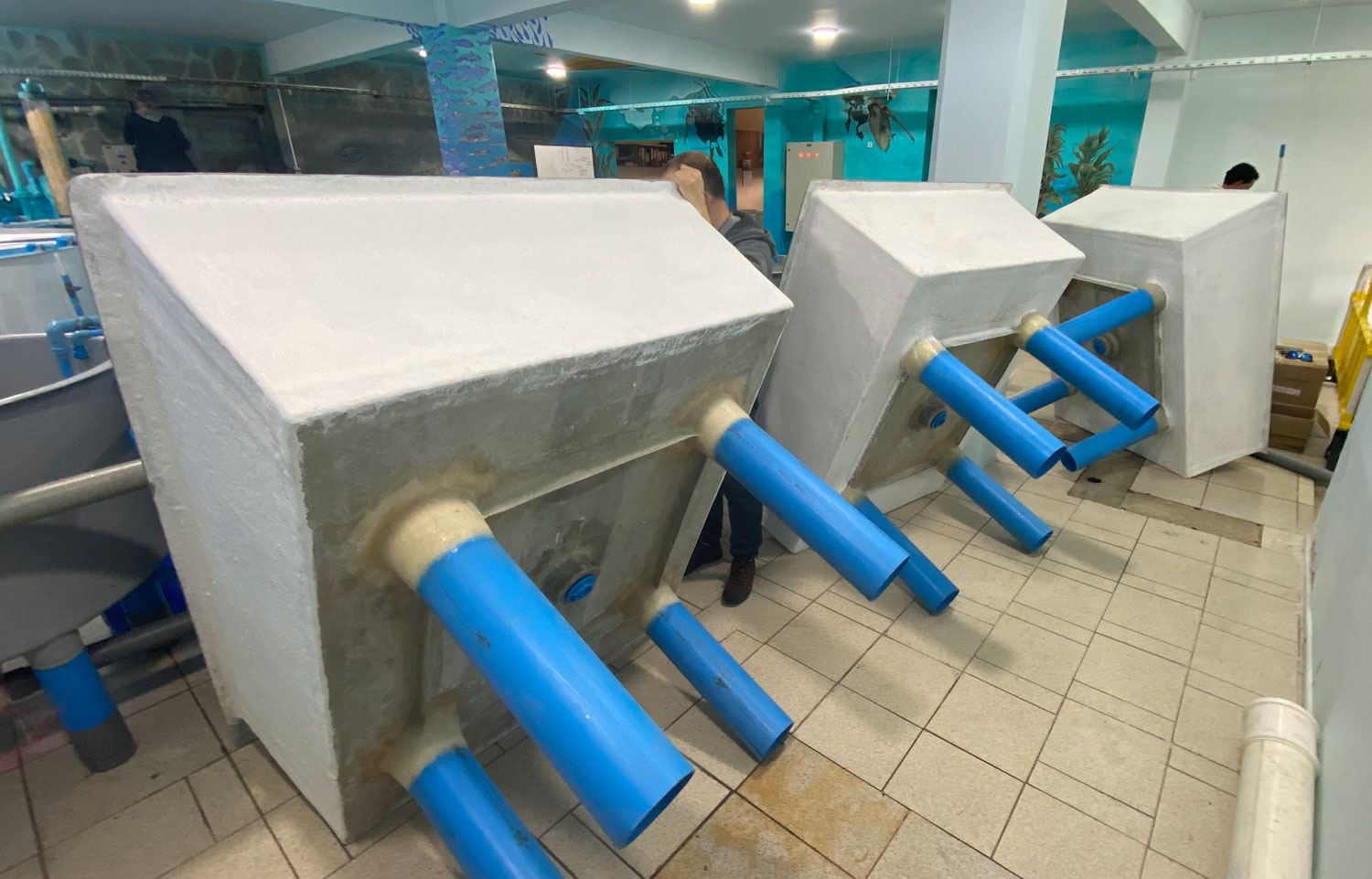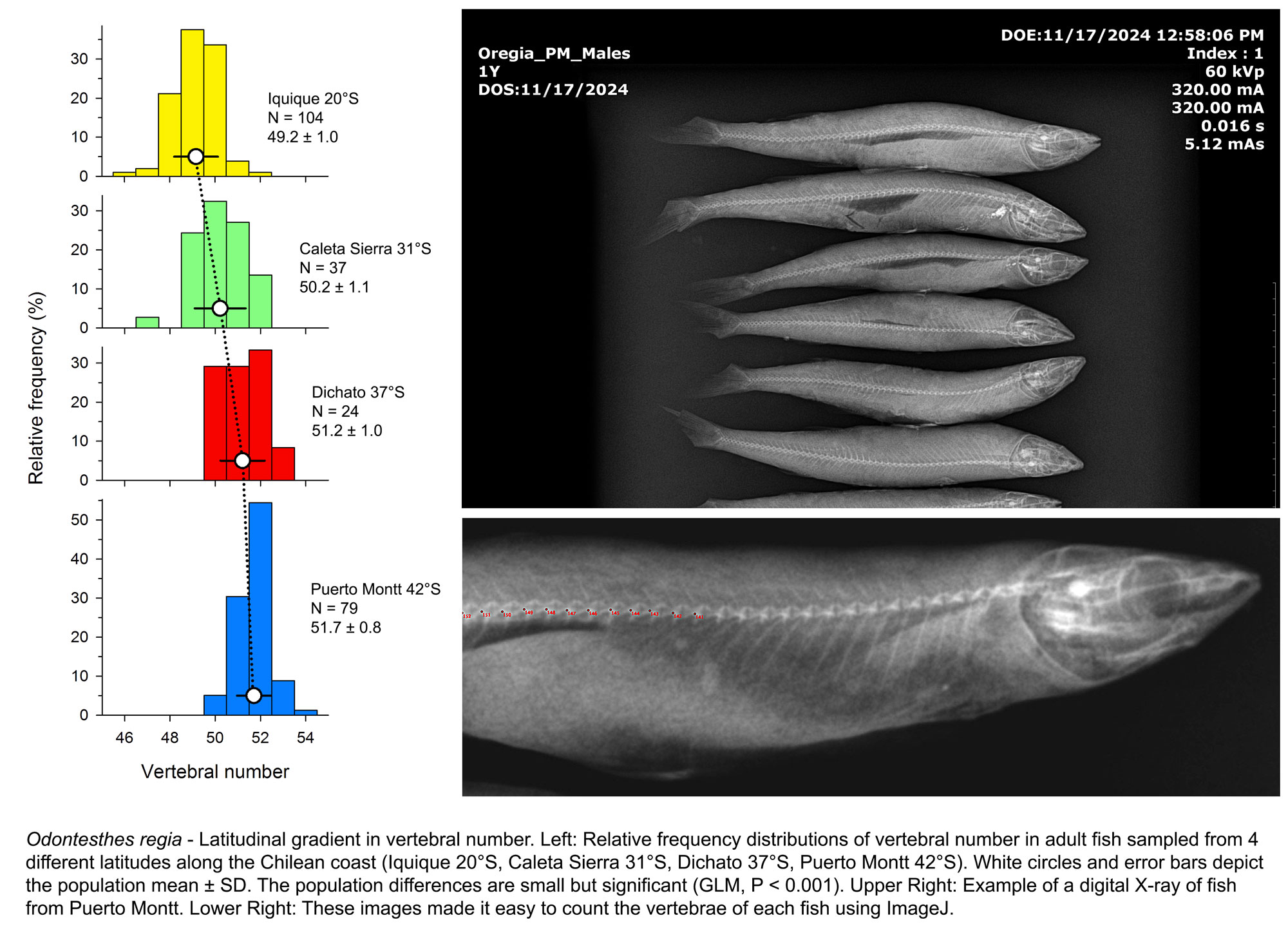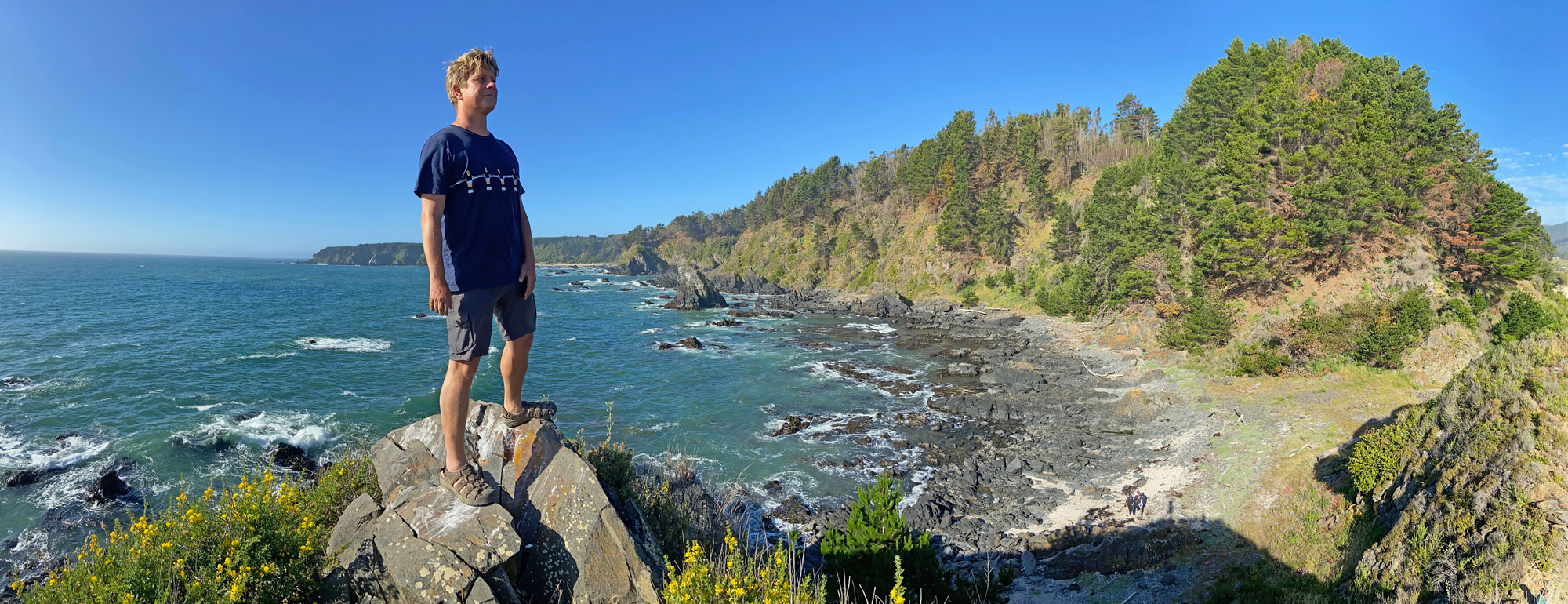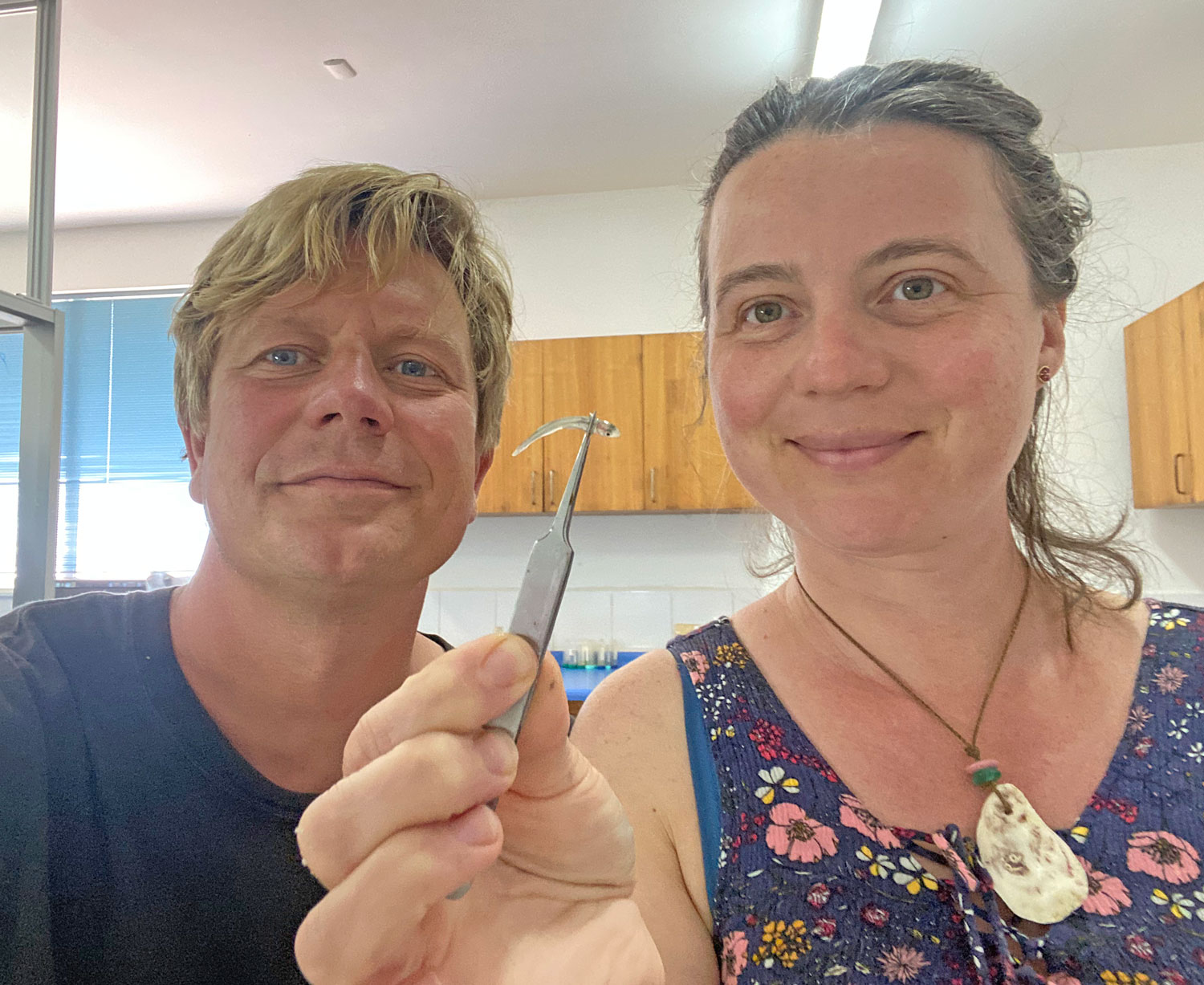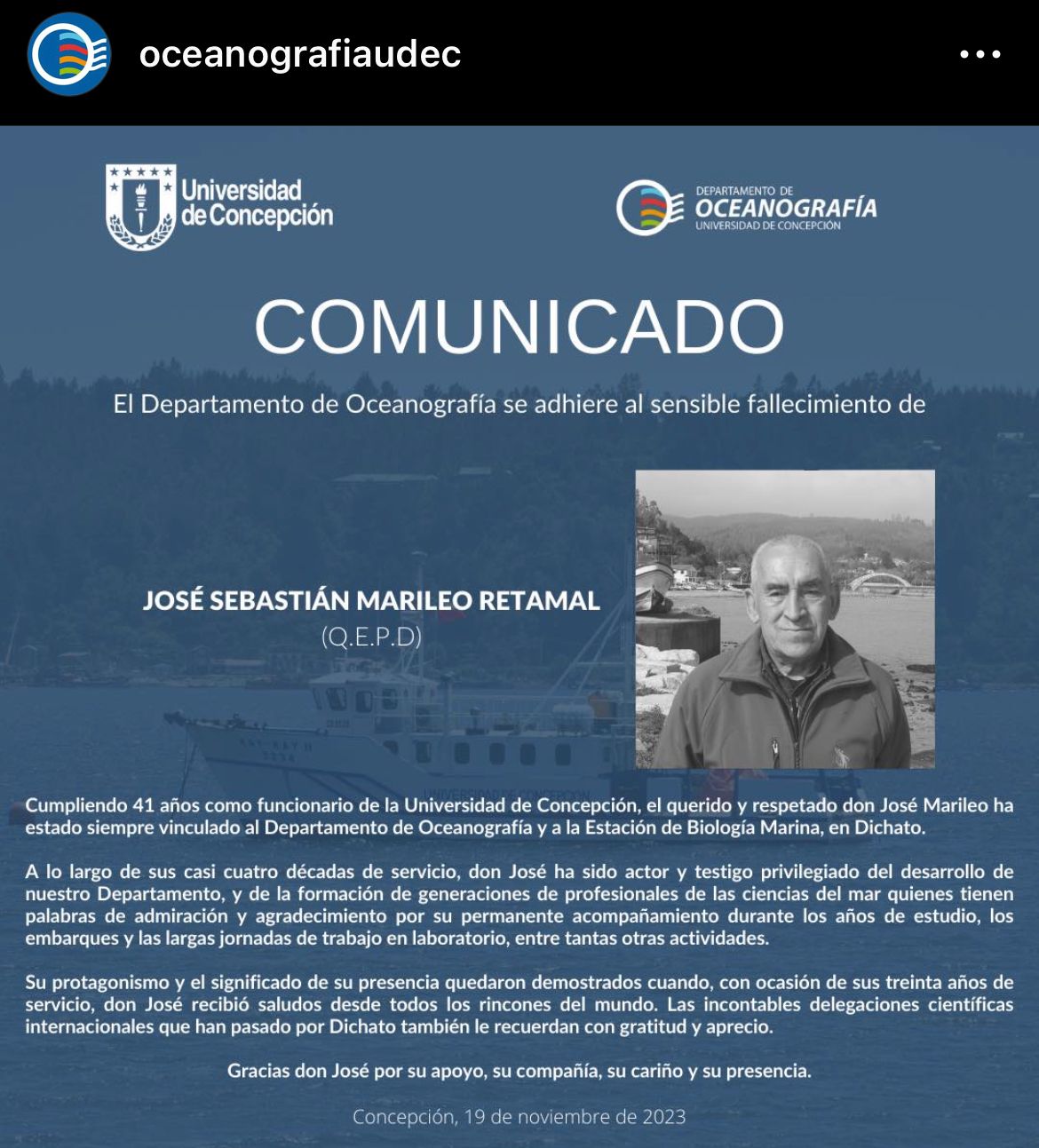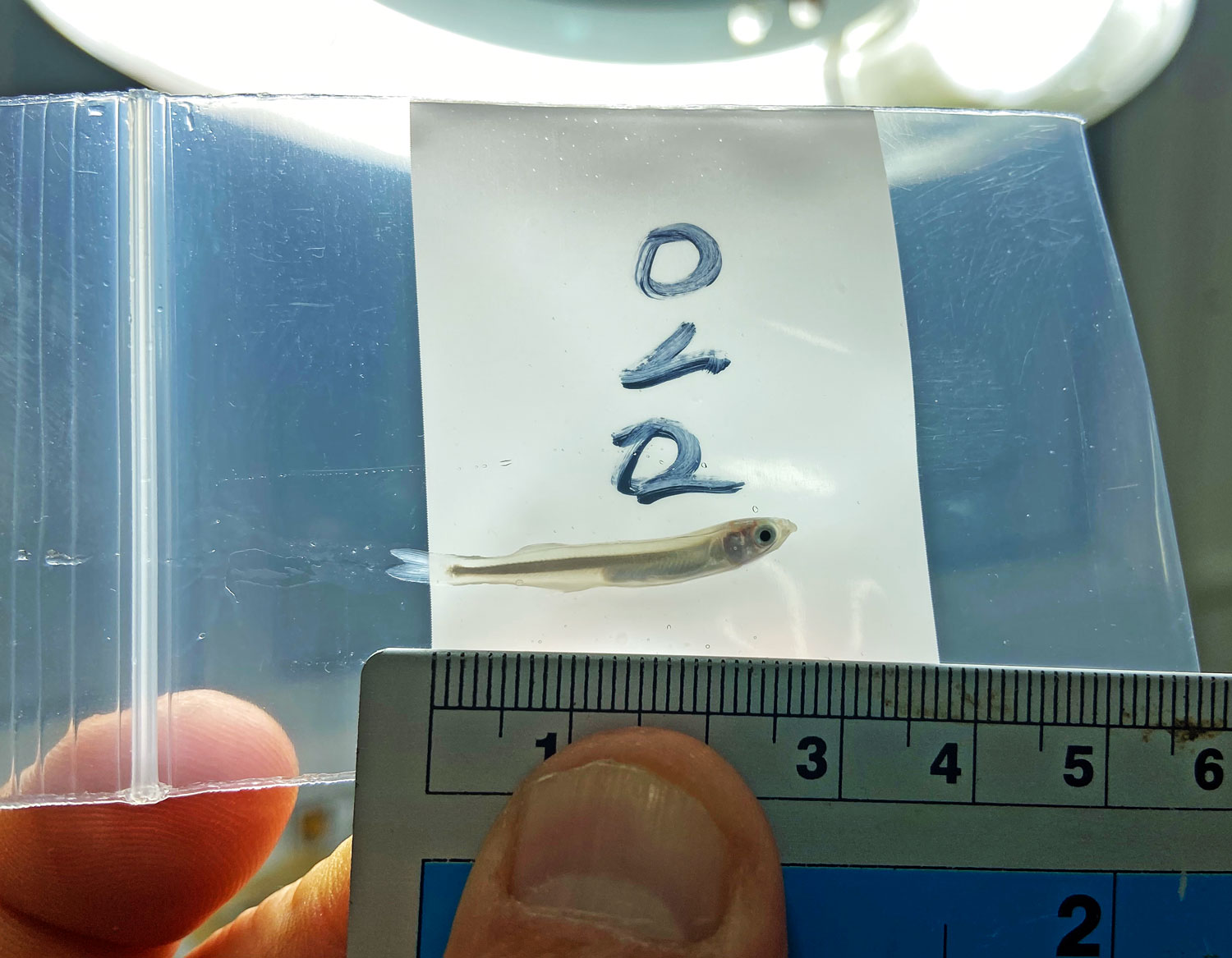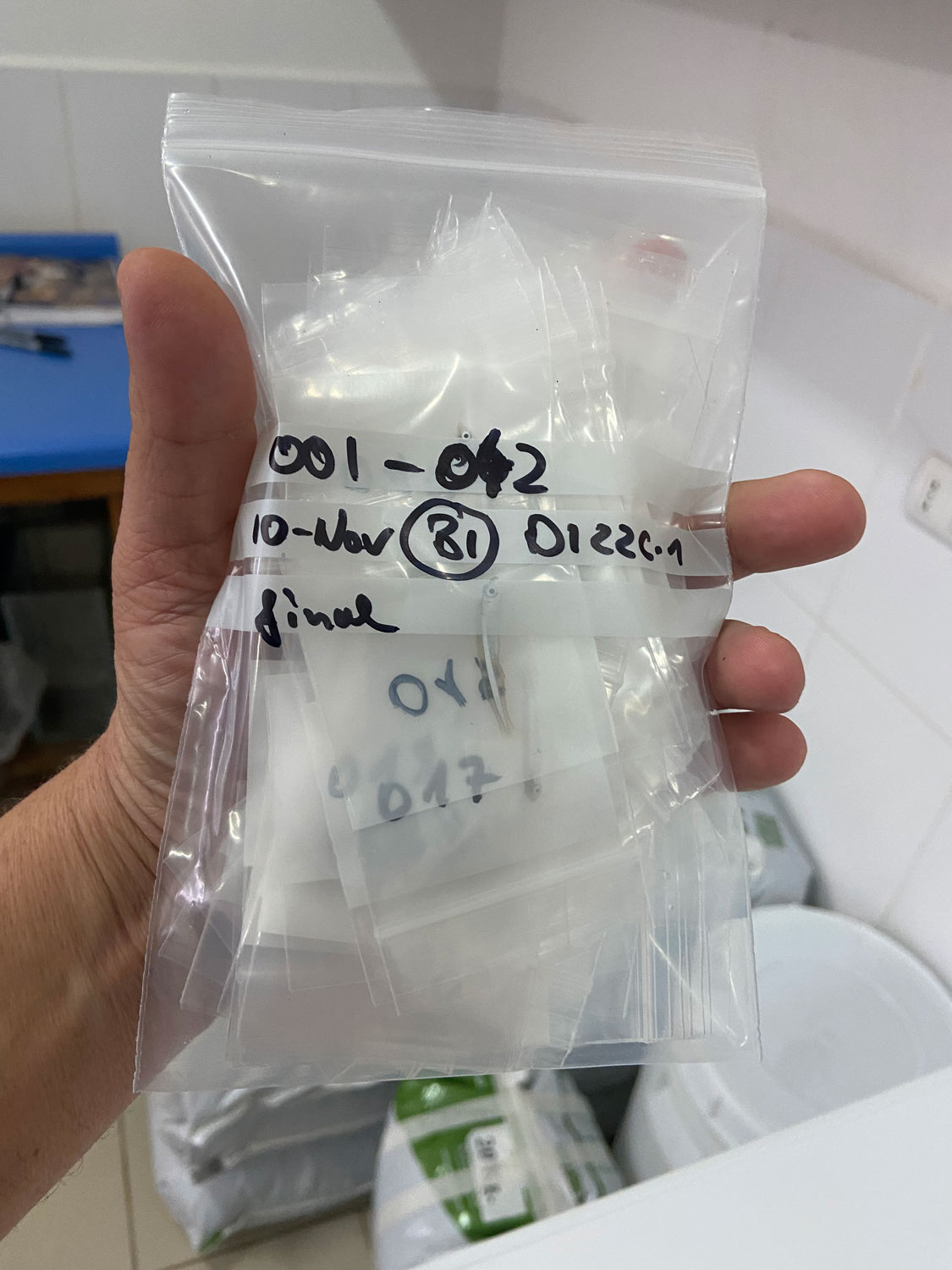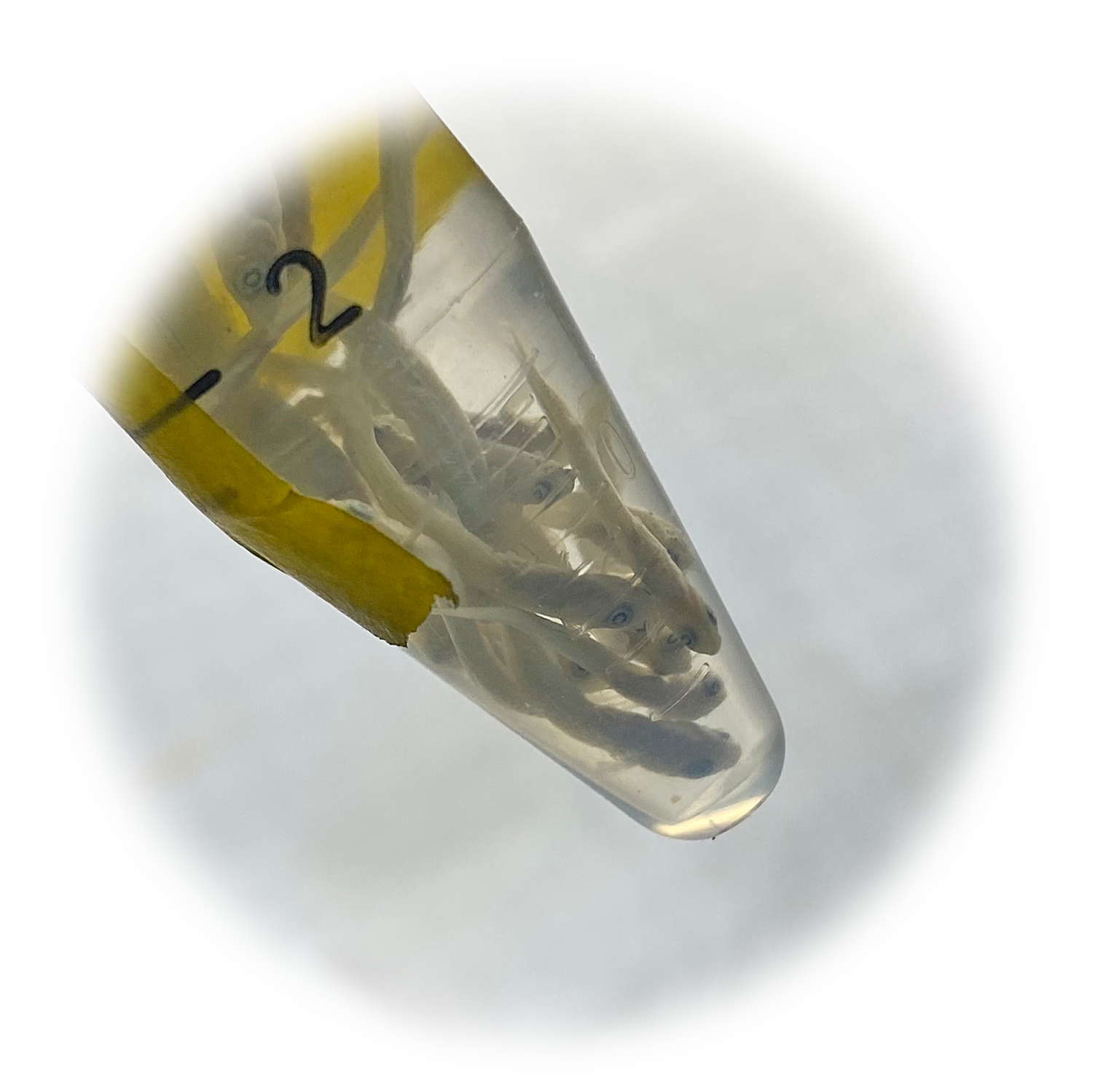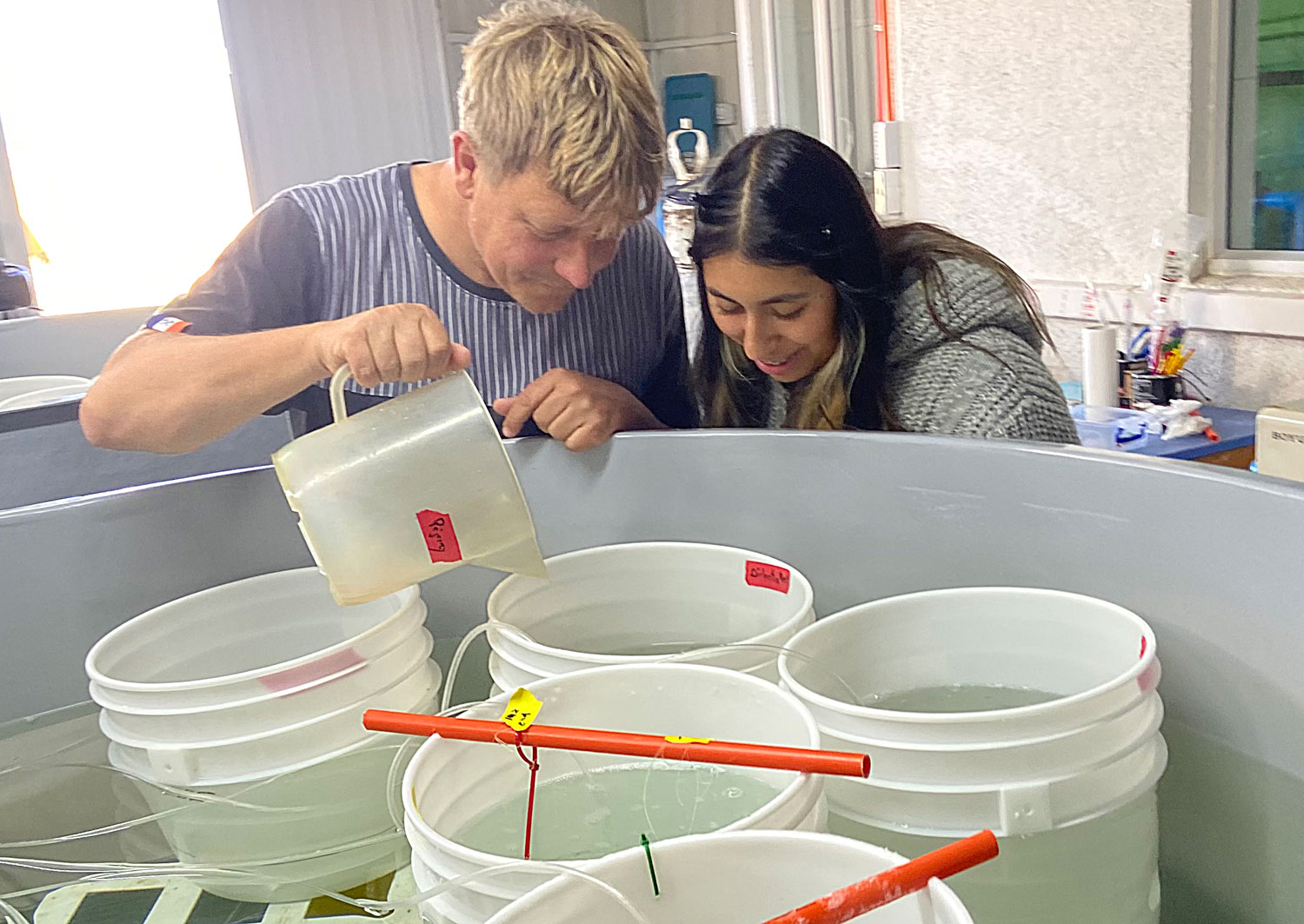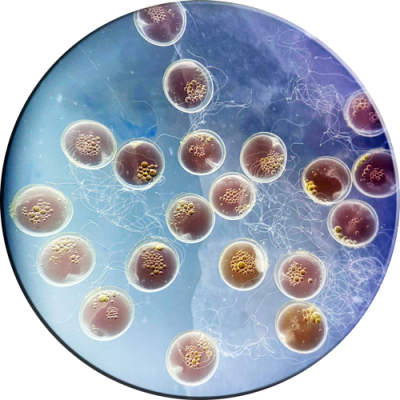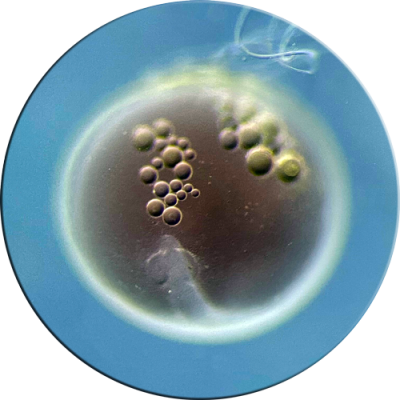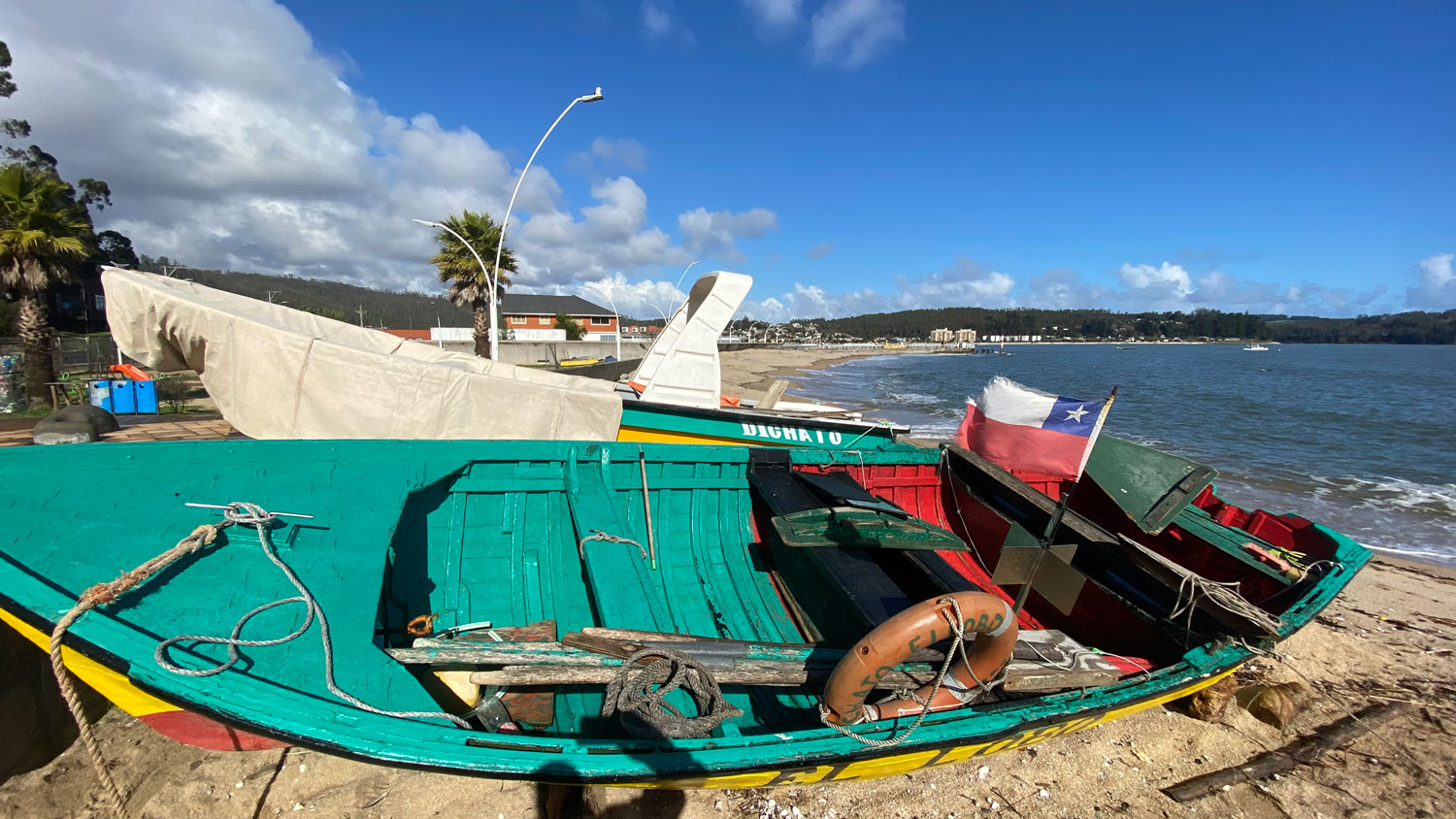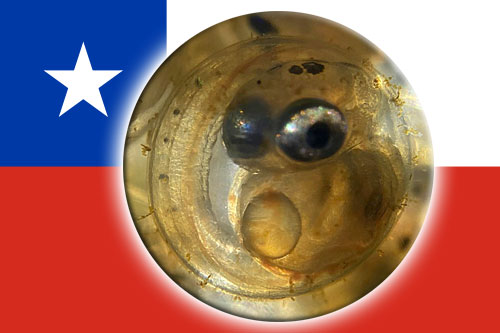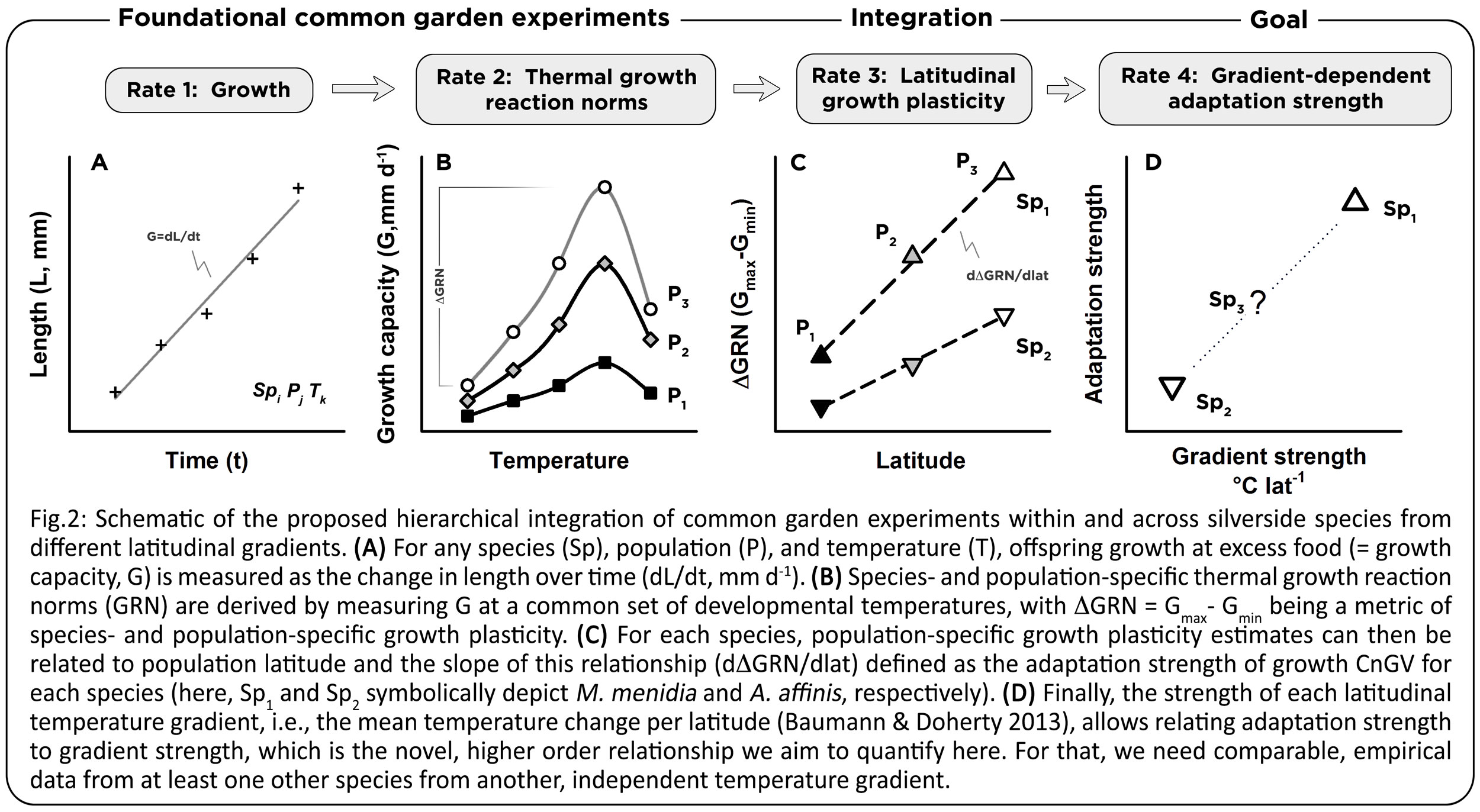"Somewhere in the back of every scientific mind, there likely exists this one idea, a project of special significance that always seems to be waiting. Lingering patiently for years in the shadows of seemingly more pressing tasks. But one day the opportunity is ripe and demands to be pursued. This is that kind of project."

"Enabled by the privilege of sabbatical freedom and fantastic collaborators in Chile, we can now pursue further integrative experimental work on principles of adaption across spatial climate gradients.
At its face, this project is about a replicated Common Garden Experiment with Chilean silversides (Odontesthes regia). But it is also more than that, because we use methods and approaches consistent with such work on northern hemisphere Atlantic and Pacific silversides (e.g., Conover & Present 1990; Baumann et al. 2011).
We therefore hope that our findings will lead to a higher level of integration, because for the first time we will compare adaptation patterns across three major latitudinal climate gradients on earth.
Our main question is therefore not whether Chilean silversides display local adaptation across latitudes, but what form it takes and how its strength likely scales with the strength of the underlying climate gradient."
Want to learn more? Hannes talks about adaptation to climate gradients in space and time, and how this has inspired this new research project.
From the start, Mauricio has been an ever upbeat and optimistic partner in this project. In just a short amount of time, he became the most invaluable collaborator and friend. Without his enthusiastic support, none of this could have happened.
At the Universidad de Concepción, Mauricio works within the Zoology department where he leads the Comparative Animal Physiology Lab that specializes in physiological measurements (e.g., metabolism) in a variety of invertebrate and vertebrate organisms.
Mauricio Urbina Foneron
PhD. Animal Physiology. University of Canterbury. New Zealand, 2013
https://urbinanimalab.wordpress.com/
Dr. Cristian Gallardo-Escárate is the Director of the Interdisciplinary Center for Aquaculture Research (INCAR) and also the leader of the Laboratory of Biotechnology and Aquatic Genomics at the Center of Biotechnology of the University of Concepcion.
INCAR's facilities at the Dichato Marine Station housed the first common garden experiment in 2023. Also, Cristian brings a whole new set of molecular interests and tools to Team Pejerrey.
Check out Cristians career and productivity: ORCID | Web of Science | LOOP
And the invaluable rest of Team Pejerrey in Dichato and across Chile
What does 'Space for Time" mean?
Many organisms have evolved local adaptations to environmental gradients across latitudes, altitudes or depth. Why wouldn't the same principles also apply for adaptation to climate change in time?
Such ‘space-for-time’ analogies promise a deep understanding how species will adapt, but they cannot tell how long this would take. Hence, they are not a panacea, but most powerful in combination with other approaches (e.g., experiments).
(I) Public NSF-Award Abstract
It is virtually certain that man-made climate change is forcing Earth’s biota to adapt to the novel environments of the future. How exactly evolution accomplishes this is difficult to predict but among the most important problems for mankind to understand.
One approach is to study spatial analogues of climate change; for example, in the way temperature changes predictably with latitude. Many species have evolved adaptations to such latitudinal climate gradients, and this proposal further explores the underlying principles of local adaptation. The research focuses on the Chilean silverside (Odontesthes regia), a small short-lived forage fish that occurs along most of the South-American Pacific coast. Choosing a silverside fish is strategic, because it allows comparing and integrating any patterns into the existing empirical evidence amassed for northern hemisphere silverside species over past decades.
This project will therefore execute a large common garden experiment to rear newly fertilized offspring obtained from wild parents at four locations along the Chilean coast (20 - 43°S) at common temperatures of 10 - 22°C. Measurements of growth rate and vertebral number will show how these traits change between populations from different latitudes – which under common garden conditions are indicative of genetic differences due to local adaptation.
Then the degree of these changes can be compared to what is known about northern hemisphere silversides to derive a potentially novel relationship between gradient strength and adaptation strength. If such a relationship exists, it would allow scaling the strength of evolution to the degree of temperature change in space and – by inference - time.
PIs will conduct a seminar classes at the Universidad de Concepción, covering fish ecology and evolutionary principles of adaptation. To further build theoretical and experimental capacity, the project actively trains a Chilean graduate student to replicate the experiment and to fund an exchange visit to the PIs lab in the United States.
(II) Technical NSF-Award Abstract
How organisms adapt to climate gradients in space and time is a fundamental question for humanity and therefore a central funding objective for NSFs BIO and BIO-OCE programs.
This proposal advances understanding of two forms of local adaptation: co-gradient variation (CoGV) and counter-gradient variation (CnGV), which underlie adaptation to large-scale, latitudinal climate gradients. Both have been extensively studied in northern hemisphere silverside fishes (Atherinopsidae), but whether they also hold for southern hemisphere silversides and whether they scale with the strength of the underlying climate gradient is unknown.
The proposal will fund a comprehensive, replicated common garden experiment with the Chilean silverside Odontesthes regia; to be conducted at the Dichato Marine Station at University of Concepción. Specifically, the experiment will rear newly fertilized offspring obtained from wild founders at four locations along the Chilean coast (20 - 43°S) in triplicates at four common temperatures (10 - 22°C) to a common juvenile size.
Trait measurements of growth capacity, vertebral number, and total mercury concentration will show whether thermal reaction norms show evidence of CnGV in growth capacity and CoGV in vertebral number. These data will then be integrated into the existing empirical evidence for northern hemisphere silversides. If the latitudinal strength of thermal reaction norms varies as predicted, it will allow deriving a novel relationship between gradient strength and adaptation strength.
If such a relationship exists, it would be transformative, because it would allow scaling the strength of thermal reaction norm evolution to the degree of temperature change in space and – by inference - time. ‘Space-for-time’ analogues are one important approach to better understand how organisms and their traits may evolve under global climate change.
Phase 3: Repeating the common garden experiment (2025)
23. Hannes returns to the US, but the experiment continues!
10 November 2025. The spring is now in full swing here in Dichato, and the days are getting steadily hotter and drier. The past 6 weeks flew by in a whirlwind of action, and with all the last minute preparation plus the vagaries of coordinated field sampling and larval rearing it definitely is with a little pride that I look back at all that we have accomplished in this short time.
We stood up the experimental setup in just a matter of days, with new tanks and in a new (better) location inside the main wet lab of the Dichato station (aka 'El Acuario'). We flew to Iquique for the October full moon and were rewarded with spawning ripe fish; and with similar ease sampled the Dichato population just two days later. A trip to the notoriously difficult Coquimbo region unfortunately ended without fish, but the sampling of the southernmost population in Puerto Montt was again timed almost perfectly for the November full moon.
All the while the setup withstood the reality test, and I taught Tamara Cuevas, a technician from the station, the many aspects large and small of the rearing methods. Tamara will now take over the daily rearing for one month, before I will return in mid December to help terminate the experiment and then take home all samples. All the best, Tamara, for your time as the main experimenter!
We are halfway through the rearing, fingers crossed that the second half will go as smoothly!
22. The experiment begins to produce data!
29 October 2025. While the fish from Dichato in the coldest treatment have just begun to hatch, their conspecifics from Iquique and Dichato growing at the warmest temperatures have already more than doubled their size at hatch and are therefore ready for a first length sample. This is always a particularly sweet and rewarding moment, when after all the work to get to this point - it now finally arrived.
In each rearing container, 80 fish remain to grow further, while the rest is sampled, preserved in ethanol and then measured via calibrated pictures. Then the size difference between hatch and the first time point is divided by the number of days to obtain our first growth rate estimates of the second experiment!
21. No luck in Caleta Sierra
15 October 2025. While the embryos from Iquique and Dichato develop and now begin to hatch in the warmest temperatures, Hannes and Claudio took a quick trip to get embryos from a third population at ~ 30S. It's where the Chilean coast is as wild and rugged as anywhere else, but the trees have already given way to prickly shrubs and lots and lots of cacti - the desert begins. It's also the area around the big double city of Coquimbo/La Serena, where already in 2023 we ran into trouble finding pejerrey, let alone spawning ripe ones. Back then, we thought of it as an aberration, something surely owed to the strong El Niño phenomenon of 2023 - but nothing permanent.
And so here we are again. And to our chagrin, again the fishermen in the Coquimbo fish market just shrug and point to the pejerrey they sell. No, those are not local at all; they are from the south of Chile in Puerto Montt.
20. The setup is ready ... and the fish are, too!
7 October 2025. Its been a truly wild last few days. In Dichato, we were racing against time to get all the setup ready, including an emergency bus trip bus to Santiago to retrieve the missing chillers from a central aquarium store, and a Saturday morning frenzied work session to get everything up and running before the first sampling trip to the north.
On Saturday night Hannes flew to the desert city of Iquique at 20S, a place of unreal beauty and harsh landscapes of sand, rocks, and ocean. Thanks to the incredible help and expertise from local collaborators Prof. Miguel Araya and Dr. Cristian Asocars, the Sunday (5 Oct) morning fishing via gill net was almost too good to be true. With just one cast, we caught upwards of 400 Chilean silversides, all running ripe perhaps inspired - as we often found for northern hemisphere silversides - by the full moon. The fertilization in the boat and then transport of the embryos back to the lab via airplane all went without problems - a rare moment to cherish as an experimenter.
19. Hannes back in Chile to start the 2nd experiment
25. September 2025. I have been asked by quite a few people (in both hemispheres), why I had to go again to Chile, to the same place, the same marine station, to repeat the same experiment from two years ago? Did the first fail somehow? No, not at all. The first experiment yielded really intriguing data suggesting similar local adaptation patterns in southern compared to northern hemisphere silversides.
But the catch is that one year could be a coincidence. To make statistically robust inferences about the nature of local adaptation in Chilean silversides, good science simply demands another, a second independent data set of observations. Even more so, because (i) the adaptation strength here is likely subtle, and (ii) some treatments and populations were indeed less successful the first time around.
And so I'm here again. The place where I spent 6 months during my sabbatical feels wonderfully familiar - despite being thousands of miles away from home. The setting September sun pours gold over the halfmoon-shaped Coliumo Bay. Spring is in the air here, but the little beach town is still mostly void of the summer crowds. I wander through the streets, recognize the stray dogs, and many of the people in this little village say they remember me and my family from two years ago.
In the marine station, the experiment is now being set up in a different location. Inside the aquarium, which is climate-controlled and therefore more suitable. It took us two years to gain permission to move in, and I had to have custom tanks made to set it all up. Will it all be worth it?
Now time is really tight, the setup needs to be put together in just a few days, because in the low latitudes of Chile's north, the spawning season of pejerrey has already begun. Fingers crossed.
Phase 2: Working on data at home (2024)
18. Silversides are getting x-rayed and reveal new data
Phase 1: Sabbatical research in Chile (July 2023 - April 2024)
17. Sabbatical and first year experiment ends!
16. Final samples taken for 2023 experiment!
15. Chilean silversides now in grow out phase
14. Explaining little silversides to Chilean elementary, middle and highschool students
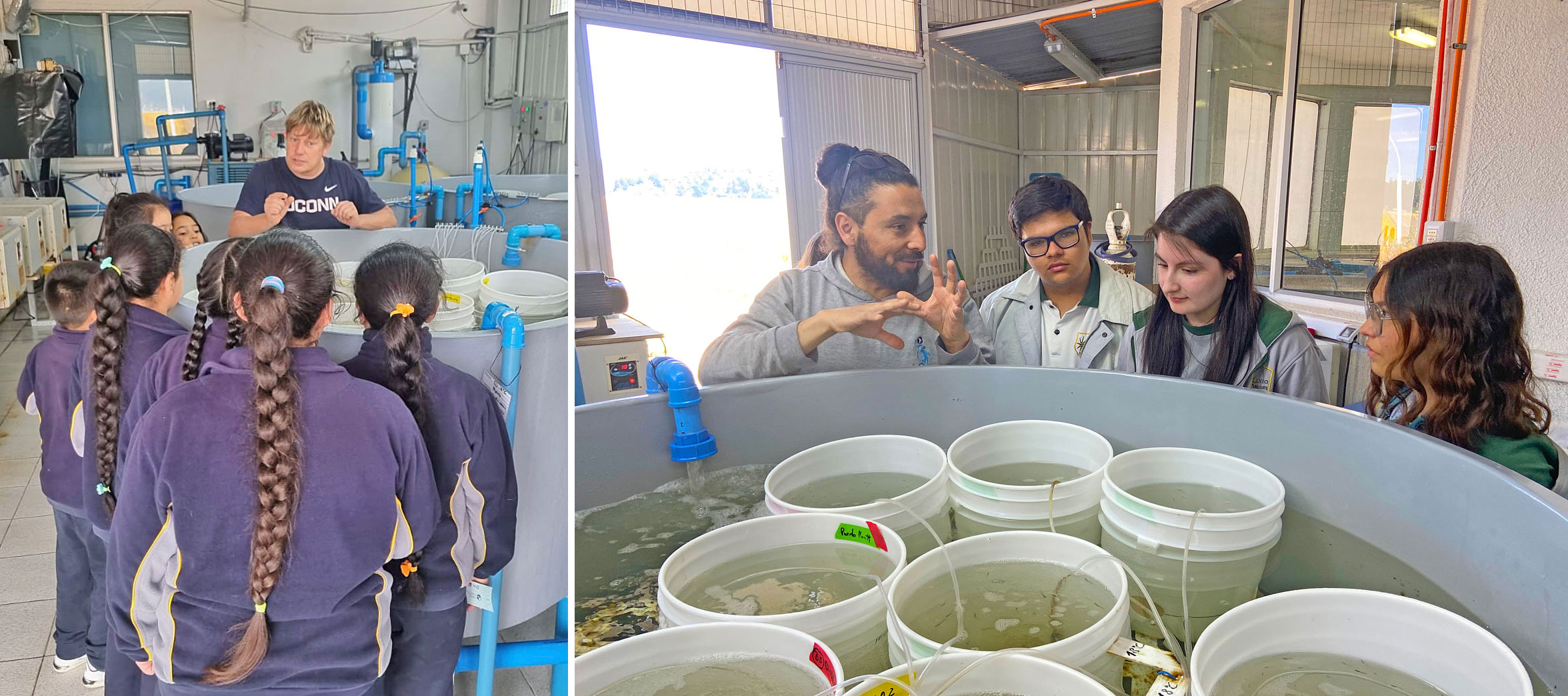
13. A sudden, tragic loss: Don Jose, the soul of the marine station, dies unexpectedly
11. First data begin to emerge

5 November 2023. The experiment now begins to generate data - and I'll try to keep up with the samples and digital measurements. Due to the staggered nature of the field collections and of course the vastly different development rates across temperatures (10-22C), it's super important now to keep track of the individual lines (containers, population) sampling schedule. Like in this example here, we'll soon making such growth rate calculations for other temperatures, stages, and populations. The full dataset, however, is still months away
10. Silverside bonanza in Puerto Montt

8. Success in Iquique
16 October 2023. Hannes went on a second trip to find and strip-spawn Chilean silverside from the northernmost population in Iquique (20S). Thanks to the incredible help of Cristian Azocar and Miguel "El profe" Araya, the skills of local fisherman 'Choche', and the necessary dose of luck, this time around we've produced enough embryos for all temperature treatments and replicates. This means that we now indeed have the contrast we were aiming for!
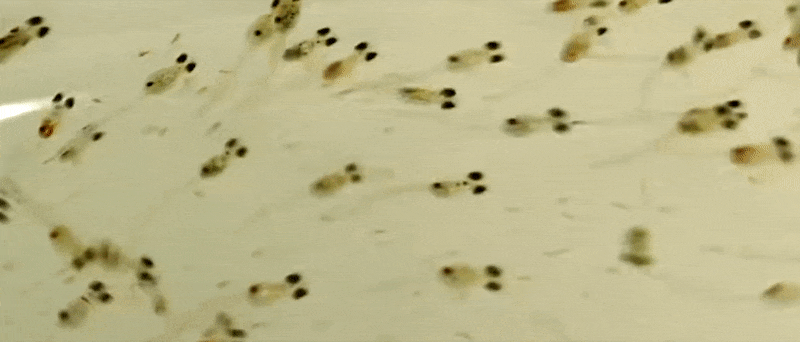
7. Hatch day - Dichato population 22C - 9dpf
5 October 2023. Newly hatched Chilean silverside larvae swimming and catching brine shrimp nauplii.
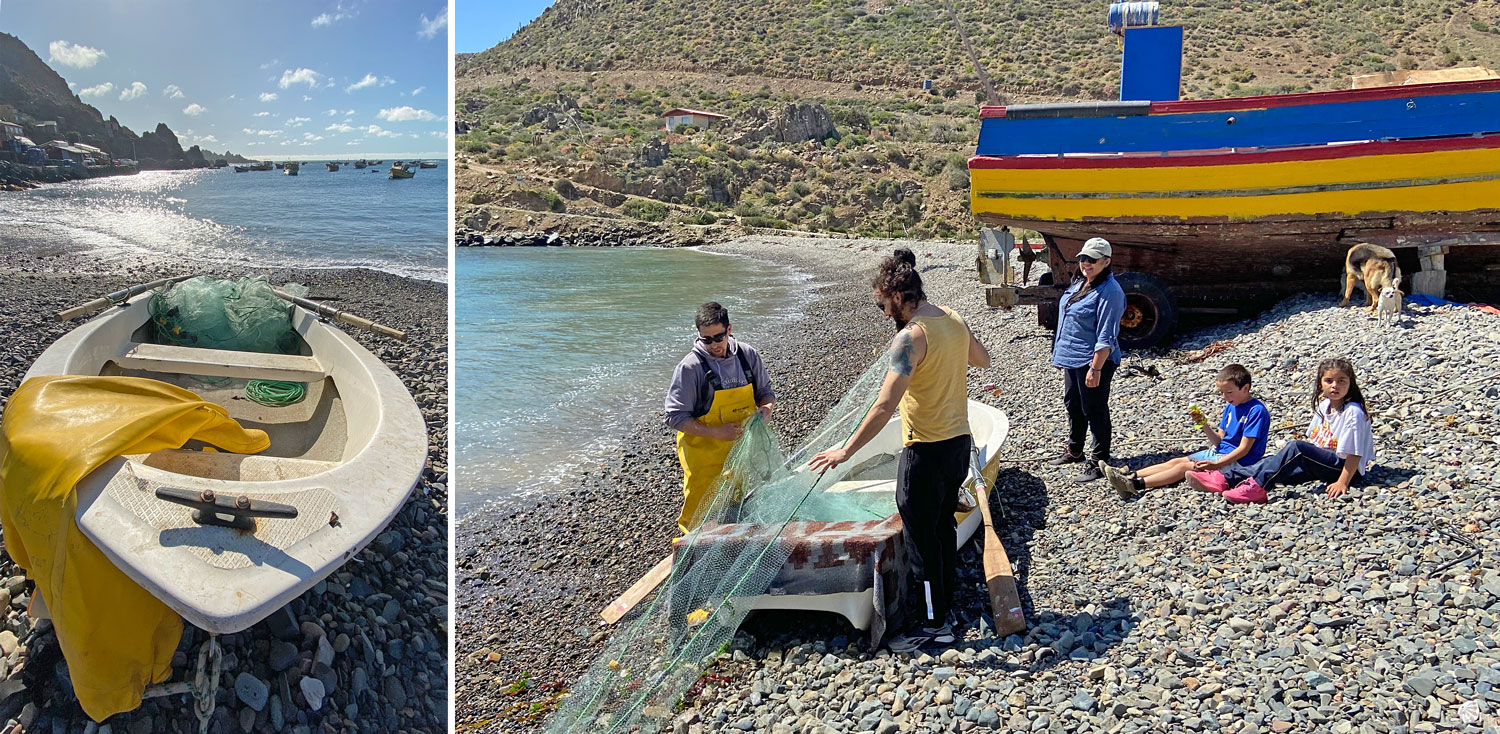
6. Troubles in Coquimbo
3 October 2023. Unfortunately, our most recent sampling trip to the Coquimbo region produced more worrisome signs that the coastal marine nature and its phenology are seriously impacted by the particularly strong El Niño year. Fishermen in Coquimbo report having seen no silversides in months and our own attempt at gill netting fared no better. All contribute to new exceptional details, like the appearance of tropical bonitos (Sarda chiliensis chiliensis) in Coquimbo waters, which is further south than anyone can remember. We hear that local water temperatures are 2-3 degrees above averages for the season.
We finally find the small fishing village of Caleta Sierra a bit south of Coquimbo. Here, we at least encounter and sample silversides, but few and across are large size range, and most appeared nowhere close to spawning.
Still, this road trip through arid Chile had many incredible and enriching moments. Moments of awe, friendship, hospitality - and for that I will always be grateful.
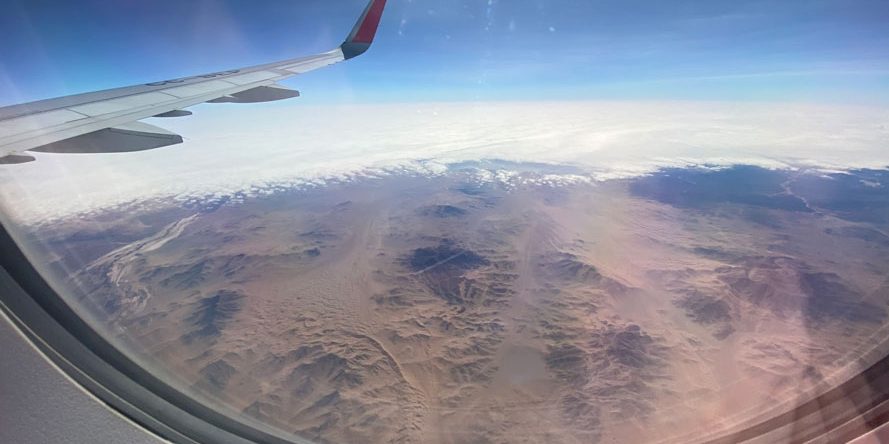 Flying over Chile affords stunning desert views
Flying over Chile affords stunning desert views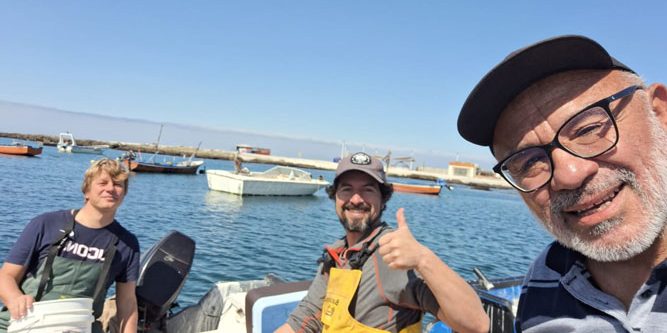 On 22 Sep, Hannes, Mauricio Urbina (middle), and Miguel Araya (right) going out to gillnet pejerreyes. Fishermen for a day
On 22 Sep, Hannes, Mauricio Urbina (middle), and Miguel Araya (right) going out to gillnet pejerreyes. Fishermen for a day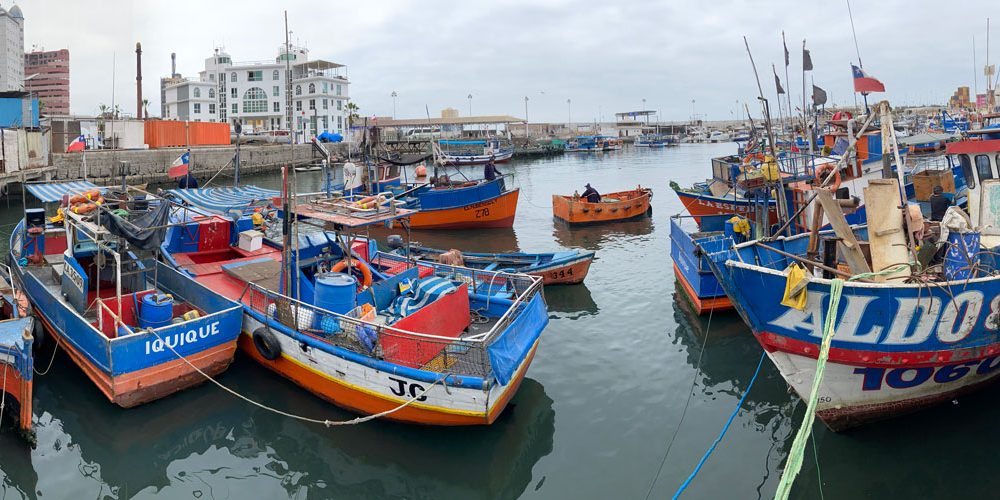 Caleta Riquelme, Iquique, Chile
Caleta Riquelme, Iquique, Chile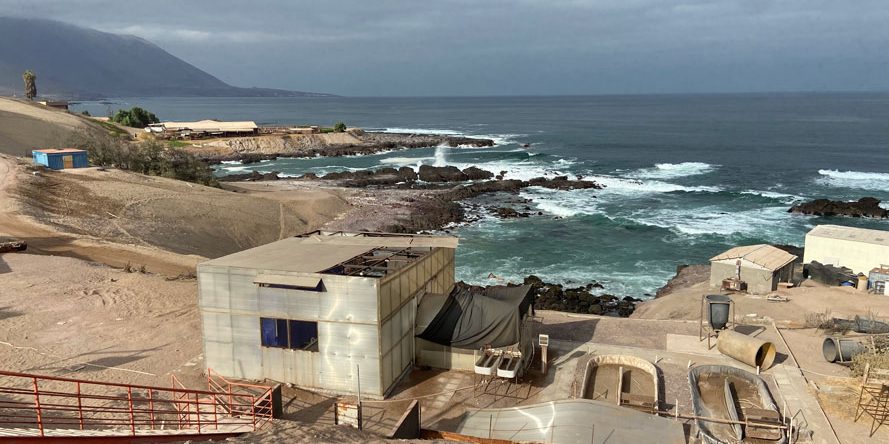 View of the coastline to the south of Iquique from the campus of the uni (Marine Sciences)
View of the coastline to the south of Iquique from the campus of the uni (Marine Sciences)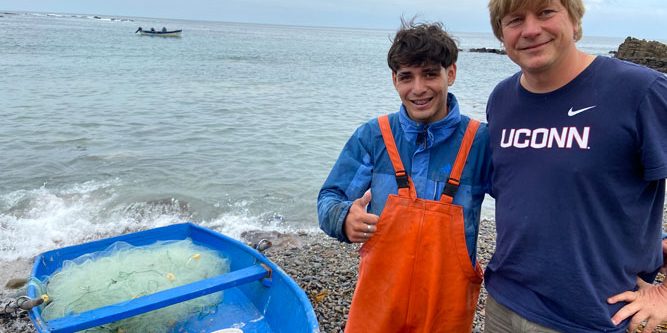 Sergio ('Checho') gillnetted pejerreyes this morning. And just sold 60 of them to silly scientists for 15,000 pesos (~17USD).
Sergio ('Checho') gillnetted pejerreyes this morning. And just sold 60 of them to silly scientists for 15,000 pesos (~17USD).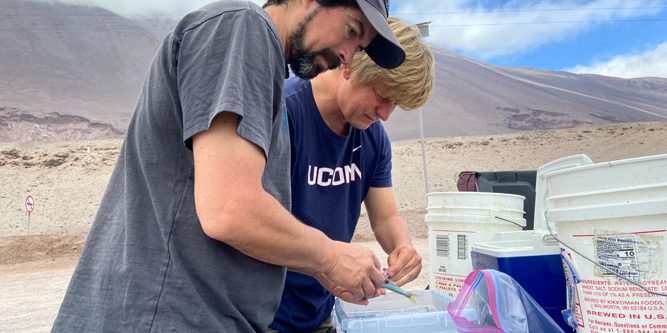 In the morning of 23 September, Mauricio and Hannes strip-spawn adults of Odontesthes regia, the Chilean silverside or 'pejerrey del mar'
In the morning of 23 September, Mauricio and Hannes strip-spawn adults of Odontesthes regia, the Chilean silverside or 'pejerrey del mar'
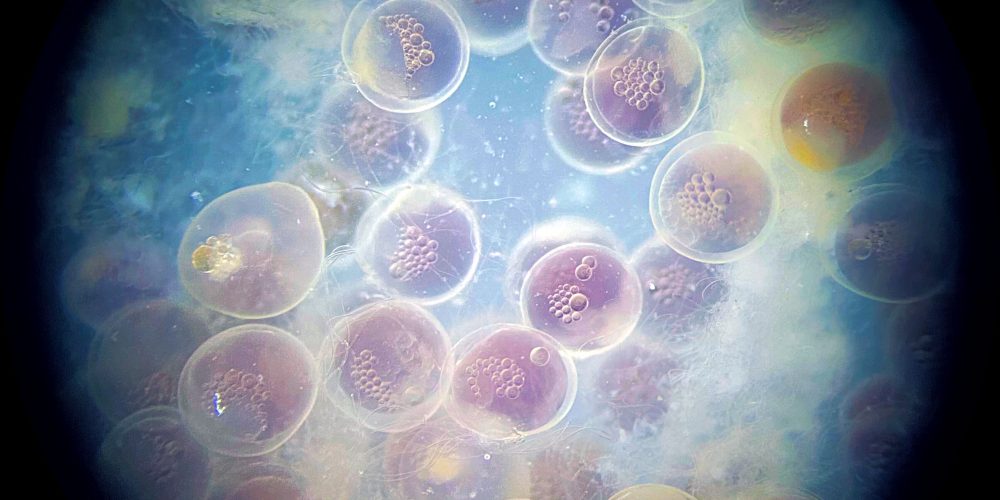 Most eggs remained unfertilized
Most eggs remained unfertilized
4. First trip to Iquique - Valuable effort. To be repeated
25 September 2023. A first sampling trip to the northern most site in Iquique (20S) saw all the highs and lows of field work. The numbers of fish, specifically pejerreyes were unusually low, and the few that we could procure from two independent sources were not in their ideal, i.e., running ripe phase yet. We found a great supporter and wonderful colleague in Prof. Miguel Araya (Arturo Prat University), took in this incredibly dry landscape, almost dystopian on one side and then so serene to the other - the blue of the Pacific. In the end, we obtained some embryos but too few to actually start an experiment with them. Most of eggs failed to get fertilized.
3. "Estamos listos!"
20 September 2023. After some intense weeks of continuous building, the experimental setup is now ready.We split two two-tank recirculating systems used normally in salmon research into four individual recirculating systems, all fitted with chilling and biofiltration capacity. The 1400L tanks are being filled with ~ 1000L of water and will be able to house a maximum of 16 individual 20L buckets.
Now the fish embryos can arrive!
2. Assembling parts and pieces
12 August 2023. While Chile begins to see the first signs of spring and starts to feel increasingly familiar, the parts and pieces of the experiment slowly arrive and are being assembled in Dichato. More buckets, heaters, chillers - all while becoming friends and colleagues with the staff of the marine station.
1. Hannes starts sabbatical research in Chile
17 Juli 2023. Hannes just moved for 5 months to a small village called Dichato near Concepción in south-central Chile to build and then conduct a large common garden experiment on the Chilean silverside Odontesthes regia.
It's still early, disorienting days - but thanks to the ever optimistic Mauricio Urbina, the collaborator on this project, the mood is good and full of anticipation.
Phase 0: Proof of Concept (October 2022)
A two-week stint to south-central Chile showed that our planned research on Chilean silversides is feasible, and the conditions for this US-Chilean collaboration are all favorable. You can read more about this trip here: "Fishing for Silversides ... in Chile!"


